Best Coast Water Sports
BCWS is your go-to source for all things related to water sports


How to Become a Yacht Master: A Step-by-Step Guide
Becoming a Yacht Master is an exciting and rewarding journey that allows you to combine your passion for sailing with a promising career path. This comprehensive guide will provide you with the essential steps to becoming a Yacht Master, including understanding the role, meeting prerequisites, obtaining certification, gaining practical experience, advancing your career, and tips for success.
How to Become a Yacht Master in the RYA
To become a Yacht Master in the Royal Yachting Association (RYA), you will need to complete a series of courses and gain the necessary experience.
Here are the steps you can take to become a Yacht Master in the RYA:
- Gain experience : You will need to have a certain amount of experience before you can start working towards your Yacht Master qualification. This usually involves logging a minimum number of sea miles and completing a certain number of hours of helm time.
- Complete the Day Skipper course : This course will teach you the basics of navigation, seamanship, and boat handling. It will also give you an introduction to basic weather forecasting and how to plan a passage. You will need to complete this course before you can progress to the Coastal Skipper and Yacht Master courses.
- Complete the Coastal Skipper course : This course builds on the knowledge and skills gained in the Day Skipper course and focuses on more advanced navigation and boat handling. You will learn about night navigation, pilotage, and passage planning.
- Gain more experience : After completing the Coastal Skipper course, you will need to gain more experience before you can start working towards your Yacht Master qualification. This usually involves logging more sea miles and completing more helm time.
- Complete the Yacht Master theory course : This course covers advanced navigation, meteorology, collision regulations, and safety at sea. It is designed to give you the knowledge required to navigate safely in more challenging conditions.
- Complete the Yacht Master practical exam : This is the final step in becoming a Yacht Master in the RYA. The exam consists of a practical assessment of your boat handling skills, navigation ability, and safety knowledge.
Note that there are different types of Yacht Master qualifications available, depending on the type of vessel you want to operate and the waters you want to sail in. Make sure to choose the qualification that is appropriate for your goals and experience level.
Understanding the Role of a Yacht Master
The Yacht Master is a highly skilled professional responsible for the safe operation and overall management of a yacht. To fully grasp the requirements of this role, it is important to examine both the responsibilities and qualifications involved.
Responsibilities and Duties
Being a Yacht Master comes with a significant set of duties and responsibilities. These include, but are not limited to, ensuring the safety of passengers and crew, managing all onboard operations, maintaining legal and regulatory compliance, and supervising the maintenance and repair of the yacht. Additionally, Yacht Masters often need to act as navigators, assuring the timely arrival at planned destinations while taking into account the weather, sea conditions, and other potential hazards.
Skills and Qualifications
Aspiring Yacht Masters must possess a wide range of skills in order to excel in this demanding profession. Some key qualifications include excellent communication and leadership skills, a strong background in sailing and seamanship, knowledge of navigation and meteorology, mechanical aptitude, and the ability to remain calm under pressure.
Prerequisites for Becoming a Yacht Master
Before starting your journey to become a Yacht Master, you should consider the prerequisites to ensure you are on the right path.
Sailing Experience
Hands-on sailing experience is essential for building the foundation of your Yacht Master career. This includes recreational sailing or working on crewed vessels in various capacities. Many aspiring Yacht Masters begin by obtaining entry-level roles within the yachting industry, such as deckhand or mate, to gain valuable experience.
Required Certifications and Licenses
There are several certifications and licenses required to become a Yacht Master. The specific requirements may vary depending on the jurisdiction where you plan to work, but most countries require the completion of various sailing and navigation courses, like the RYA (Royal Yachting Association) Yacht Master program. These courses and certifications demonstrate your knowledge, skills, and commitment to the profession.
Physical Fitness and Health Requirements
Being a Yacht Master is a physically demanding profession that requires individuals to maintain a high level of fitness and health. It is important to assess your physical abilities and conditions to ensure you can meet the demands of the job. Additionally, some jurisdictions require a valid seafarer’s medical certificate, attesting to your overall health and fitness for work at sea.
Yacht Master Training and Certification
Once you have met the prerequisites, the next step is to obtain the necessary training and certification to become a Yacht Master.
Choosing the Right Training Program
It is crucial to choose a reputable and accredited training program. Look for programs with experienced instructors, proven success rates, and comprehensive curriculums that cover essential topics. The RYA Yacht Master program is one of the most recognized and respected certification systems worldwide.
Essential Courses and Modules
A typical Yacht Master training program consists of multiple courses and modules. Common subjects include navigation, seamanship, meteorology, safety at sea, engineering, and radio communication. Additionally, practical skills such as boat handling, sail trim, and emergency procedures are also covered extensively.
Preparing for the Yacht Master Examination
To become a certified Yacht Master, you must successfully pass the Yacht Master examination. This comprehensive exam assesses your theoretical knowledge, practical skills, and ability to safely command a yacht. It is crucial to dedicate ample time to studying and practicing before attempting the examination to ensure success.
Gaining Practical Experience
Once you have obtained your Yacht Master certification, the next step is to gain practical experience.
Building Sea Miles
Accumulating sea miles is important for both building your skills and enhancing your employability. You can do this by participating in sailing deliveries, joining yacht races or rallies, and working on crewed charters. Each of these experiences will help you become a more proficient sailor and better prepare you for the demands of being a Yacht Master.
Networking and Finding Opportunities
Networking is crucial for securing opportunities in the yachting industry. Attend industry events, join online forums, and connect with fellow sailors to build relationships and stay informed of job openings. This will not only help you find employment but also provide invaluable support and guidance throughout your career.
Learning from Experienced Yacht Masters
Seek out opportunities to learn from and work closely with experienced Yacht Masters. Building a mentorship relationship with someone who has already achieved success in the profession can provide invaluable insights, advice, and practical tips to help accelerate your own career.
Advancing Your Yacht Master Career
Once you have gained experience and established yourself as a competent Yacht Master, it is important to look for ways to advance your career.
Continuing Education and Professional Development
Investing in your ongoing education and professional development is essential for remaining competitive and staying updated on industry best practices. This can include attending industry conferences, enrolling in additional training courses, and obtaining specialized certifications to expand your skillset and expertise.
Joining Professional Associations
Joining professional associations, such as the RYA or the International Yacht Training (IYT) community, offers numerous benefits. These organizations provide access to networking events, job boards, professional resources, and continuous learning opportunities, all of which can help elevate your career.
Exploring Job Opportunities and Specializations
With experience as a Yacht Master, you can explore various job opportunities and specializations within the yachting industry. Some popular career paths include working as a captain of private or charter yachts, managing yacht operations and maintenance, and serving as a consultant or instructor. Pursuing a specialization can lead to increased job satisfaction, better employment prospects, and higher earning potential.
Tips for Success as a Yacht Master
To ensure a successful and fulfilling career as a Yacht Master, consider the following tips:
Developing Strong Leadership Skills
As a Yacht Master, you are responsible for leading and managing your crew. Developing strong leadership skills, such as effective communication, decision-making, and problem-solving, are essential to creating a harmonious and efficient onboard environment.
Staying Updated on Industry Trends and Regulations
The yachting industry is continuously evolving, and staying informed of the latest trends, technologies, and regulations is crucial. Regularly review industry news, engage with your professional network, and attend educational events to keep your knowledge current and maintain your relevancy in the industry.
Balancing Work and Personal Life
Finally, maintaining a healthy work-life balance is essential to your well-being and long-term success in the yachting industry. Set boundaries, prioritize self-care, and make time for personal interests and relationships to ensure you can enjoy a rewarding and enduring career as a Yacht Master.
Yachting Monthly
- Digital edition

Tips and hints for passing your Yachtmaster practical
- Katy Stickland
- July 21, 2021
Having brushed up on their theory, racing turned cruising sailors Liz Rushall and her husband Mark now put it into practice and tell you how to pass your Yachtmaster Practical exam

The humble fender and bucket, used to simulate a man overboard, is surprisingly effective in revealing things about your boat handling, leadership and decision-making skills. Credit: David Harding
Having got through her Yachtmaster Theory , Liz Rushall shares her tips and hints for the Yachtmaster Practical
It’s not often I wish to not be aboard a boat, writes Liz Rushall .

Liz Rushall has won national dinghy and keelboat titles, but currently cruises a 28ft classic called Ragdoll
But in the dead of night, stressing about to what extent should I be using the instruments, when the examiner hasn’t said you can or can’t, and not being able to ‘chat’ with my crew as I would normally, and I was well out of my comfort zone.
This was after making myself feel a complete idiot from being unable to articulate the type of diesel engine, it’s cooling system and the location of the heat exchanger on an unfamiliar boat, and getting my words impossibly muddled up about flares and liferafts.
I was a bag of nerves.
Whilst I hadn’t committed any of the instant fail sins (running aground, involuntary gybes and hitting anything), I certainly spent the first night feeling broken.
Luckily, James Pearson, our extremely patient examiner asked many ‘helpful questions’ and allowed us to correct some of our verbal gaffs over the two-day exam.
Why do a Yachtmaster exam?
Having completed, and passed the Yachtmaster exam with my husband and brother, we are still justifying to curious friends the ‘why on earth, with all your experience’ we did it.
Mark, an Olympic coach, and I have raced successfully all our lives, and more recently cruised Ragdoll , our little 28ft long-keeled classic boat some respectable distances.
However, whatever our friends kindly say, we knew that following a few cruising errors in previous seasons, it was time to hit the refresh button and fill in some knowledge gaps.
The adage that you never stop learning in sailing could not be more true.
During our training, and more so during the exam itself, we certainly discovered our fourth Johari window – the stuff ‘we didn’t know we didn’t know’.

Liz and Mark did their Yachtmaster Practical and subsequent Yachtmaster Offshore exam with Universal Yachting in Hamble. Credit: David Harding
Before starting the Yachtmaster process, we knew we were coming at the exam via a slightly unusual route.
We’d never done the conventional pathway of practical Day Skipper or Coastal Skipper exams.
In fact, despite winning a number of championships, we didn’t have a sailing qualification to our name.
Due to hectic work schedules, and our perhaps ‘assumed’ experience, we were steered towards doing a three-day ‘crash’ course ahead of the exam, with Hamble- based sea school Universal Yachting.
Our three-day Yachtmaster Practical training was probably as taxing for us as for our senior instructor, Clive Vaughan.
With acres of knowledge, Clive patiently drilled us through multiple boat-handling techniques.
Universal Yachting supplied us with a brand new Dufour 412 for our Yachtmaster Practical course and exam – a completely different experience to our wooden classic, with few electronics.
Leadership style
One of the immediate ‘culture shock’ challenges we all experienced was the expected leadership style.
When we race, whether as skipper, helm or crew, it is always a collaborative set-up. Barking orders rarely wins races.
Discussing situations, sharing thinking and playing to your team’s strength does.
However, to get us ready for the exam, Clive had to actively encourage us to direct each other.
Being so used to sailing together, it felt odd having to issue instructions and to ‘tell’ rather than share thinking.

Liz is used to a more collaborative approach to sailing, so needed to adapt to a different leadership style. Credit: David Harding
The exam leads you to a scenario where individual leadership is highly valued.
However, it felt very unnatural, and not how any of us would typically operate either in racing or in business.
In my case, it definitely began to affect my decision-making capabilities and confidence in myself.
I found it best to consider the role of skipper for Yachtmaster as a more managerial position.
For this to work, planning ahead was crucial so I was prepared to give my crew specific instructions when situations arose.
Clearly, being ahead of those situations was a key as was coming up with a step-by-step plan for my crew in a variety of situations.
Berthing skills
In a short space of time Clive taught us new techniques for berthing a modern, high-sided, 40ft yacht.
With its high topsides, shallow forefoot, deep fin keel and spade rudder, it naturally seeks the wind when going astern.
Reversing up-tide and upwind into a berth is amazingly easy, and is a skill suited to this boat.
However, this manoeuvre is simply not an option in our long-keeled Ragdoll , as she exhibits very limited manouverabiility when going astern, while in the more modern, fin-keeled Dufour it was a dream.
As such, using just a stern line we could then motor forward with the engine to bring the bow in, rather than a spring.

Liz and her husband Mark were not used to reversing into a berth but it proved a very useful technique and would be especially handy when sailing short handed. Credit: David Harding
It’s a brilliant technique if you are sailing shorthanded, but not one we had ever used before.
We practiced a lot of going astern and parking scenarios, which left me puzzling why I’d spent so much of my sailing career using springs as a sure way of getting our little boat on and off the dock.
What is obvious, however is that, once we are back onboard Ragdoll reversing onto a pontoon berth may be that much harder.
Going astern is always going to be tricky on a long-keeled yacht where prop walk has a much larger influence but there are conditions in which it will work for us and the ease of using the engine to pull the bow in will certainly make it worth the practice time.

It is easier, when shorthanded, to make off the aft mooring line and then use power ahead to hold the boat in to the berth. Credit: David Harding
As ever, we need to spend a little more time finding what works best and when.
The key is to try different options on our boat in a variety of scenarios to better understand what she will and won’t do, and how she differs to other boats.
Inevitably, you cannot simulate every scenario, and switching from training mode to exam mode was tricky too.
During the Yachtmaster Practical, one of us had to park the boat on a crowded outer hammerhead pontoon with a strong crosswind.
We’d been so drilled into our new mooring techniques, it took two failed attempts before the realisation that it was OK to do it the way we’d normally do, with a spring line!
Close-quarter manoeuvres
We’d all been advised in an exercise not to turn this boat on the spot using just small amounts of forward and astern, something we always do to turn our long-keeled boat in a tight space.
Faced with a tight turn in a marina, with cross tide, my decision making fell apart.
On a long-keeled boat that carries her way for ages, there needs to be much more momentum and water flowing over the rudder to generate the turning moment, whereas on this boat, a combination of prop wash over the rudder and lack of full keel could turn her around smartly.

Manoeuvring astern, focus will be on where you are aiming, but don’t forget to check what the wind and tide are doing to your bow. Credit: David Harding
It was an alien experience to be relying on engine and fenders to come into a berth and stop.
I was still not used to how much quicker a light, fin keeled boat could be made to turn on the spot by putting the helm hard over and giving the engine some revs, and we tended to be too tentative applying engine power.
In hindsight, taking a break between our Yachtmaster Practical course and the exam could have given time to let new knowledge sink in, and to practise it in different scenarios.
Night passages
Both the Yachtmaster Practical training course and the exam were a brilliant way to challenge our sailing skills.
Lacking an autohelm, we don’t do many night passages.
When we do it tends to be into harbours we know.
We are very familiar with sailing racing dinghies out of strange harbours all over the world, racing in fog and some very extreme conditions.
However, it’s a very different experience when cruising.

Ahead of our night passage, looking at sources of likely light pollution was helpful for situational awareness. Credit: David Harding
Completing a number of night passages and pilotage exercises during the Yachtmaster Practical was so useful.
It’s much easier to recognise lights on vessels and buoys for real, rather than pictures on a page, but to have brushed up on the lights for fishing vessels, and commercial vessels other than the most basic – restricted in ability to manoeuvre, constrained by draught and towing – really paid dividends in making sense of what we saw on the water.
We also spotted some very curious light combinations, including sailing yachts impersonating a fishing vessel by displaying both masthead tricolour and steaming light and it was helpful to decipher what was what.
One of the biggest obstacles on a close-in night passage is light pollution.
Close to shore there were many other uncharted lights to contend with.
A big lesson was to look beyond the chart markings and having a sensible check of what is on the shore near where you are going to be sailing before you set off so you have a good chance to anticipate potential confusion.
Blind passages
The exercise I’d been most dreading was the blind passage making.
You are navigating from down below, relying on your crew to tell you depths, speed and log readings.
My biggest issue is doing the maths on the hoof. The contours give you one number, the depth sounder another, and the height of tide another.
Under pressure, figuring out which subtracts from which promptly turns me into a gibbering wreck.
As it happens, during Yachtmaster Practical training, I managed to navigate pretty much exactly to the desired point using a bit of dead reckoning and some bad maths, so that was a huge confidence boost.
However, this is where I do take issue with a number of the Yachtmaster course books. The authors all assume a level of maths capability.
There’s no scope for those of us who have a touch of dyscalculia, a learning difficulty associated with numeracy.
Distance may well equal speed multiplied by time.
But I also soon realised that it makes things much easier if the time segments you are working to also need to be a percentage of the hour.
So, calculating positions every six minutes in fog allows you to divide your speed neatly by 10 to give you how far you will travel in 6, 12 or 18 minutes.
Having spent hours close to tears of frustration trying to figure out these calculations, I devised my own crib sheets that meant I could read off a percentage to use against each minute of an hour.
Fifteen minutes is therefore clearly 25% of an hour, 14 minutes is 23.3% and 13 minutes is 21.7, for example.
This crib sheet and others are something I will be using on my own boat to avoid future frustrations.
Mooring under sail
Other exercises included sailing onto anchor or mooring buoys.
Doing this downwind and uptide was something we’ve never had occasion to do in a race.
It’s more normally been a case of there’s no wind so fling the kedge out.
Dropping the mainsail well out from the buoy and using the headsail to steer in offered a great deal of control.
It was also very useful making a practice approach to give a good idea of how hard the current is running and from how far out we need to start scrubbing speed.
It was also particularly useful to set up a variety of clear transits so we had a good idea of actual boat speed on the approach as the log becomes essentially useless in tide.
You may decide to moor under motor most of the time, but I found the exercise trained us to have real control of how to place and stop the boat exactly where we want it and not rely on the engine.
Man overboard
Doing hours of man overboard exercises under engine and sail during our Yachtmaster Practical was brilliant, as evidently, we all needed some practice
Since the drill involves doing three or four things instantly, we were keen to work through techniques for short-handed MOB.
It was fascinating to quick stop the Dufour.
Rather than the conventional ‘figure of eight’, we learned to throw the boat into a tack, heaving to with the wheel hard over.

The Dufour was easy to control under sail using the fill and spill method during our Yachtmaster Practical. Credit: David Harding
She happily turned on the spot, giving you time to sort yourself out.
We’re still not sure how Ragdoll will behave, although we’ve come away with new ideas to try.
It was certainly eye-opening how quickly our recovery times came down after only a few short attempts.
Getting hove to quickly was a key so that we could remain in sight of the ‘casualty’ and it also helps slow everything down when you have a number of tasks to complete under stress.
As with manoeuvring in a marina, we also found under sail the Dufour easier to scrub speed off using the ‘fill and spill’ method than we suspect Ragdoll will be, as she both carries more way, and requires more way to maintain steerage, but we will certainly be doing some practice on her to improve our skills.
Switching between Yachtmaster Practical training and starting the exam, with just a couple of hours, was harder than I’d realised.
Suddenly, three days of Clive’s expert advice was switched off.
James explained the exam format, and how he would set us tasks, not give any feedback, just take notes. He also said we would make a lot of mistakes. And we did!
Within minutes we were on deck talking safety gear.
Despite hours successfully collecting our MOB bucket, now we weren’t just discussing recovery techniques, but demonstrating them with the examiner as our body on the dock.
It literally was in at the deep end and it continued relentlessly.
‘Question time’ highlighted that whilst I’d attended diesel maintenance and sea survival courses, clearly my memory hadn’t.
We were then into the sailing elements of the exam.

Liz found the Yachtmaster Practical and subsequent exam stressful. Credit: David Harding
It’s a good test of practical scenarios both ashore and afloat, testing your knowledge and skills in a variety of difficult situations.
Having successfully managed to navigate our night passages, day two started early.
Whilst it was a relief to go sailing, it promptly turned into your metaphorical ‘worst ever day in the office’.
After a few straightforward exercises sailing on and off moorings, I was set the first passage from Portsmouth Harbour to Wootton Creek.
On route, the instruments ‘went down’, the MOB bucket went overboard whilst I was down below chart-plotting, then the steering cable ‘broke’.
Of course, the engine had ‘failed’ too.
It seemed endless, and hard not to wonder ‘am I doing the right thing?’
Fortunately, we sailed in with emergency tiller fitted without running aground or doing circles in front of the Wightlink ferry!
Continues below…

Tips and hints for passing your Yachtmaster theory
Racing turned cruising sailors Liz Rushall and her husband Mark go back to school to brush up on their Yachtmaster…
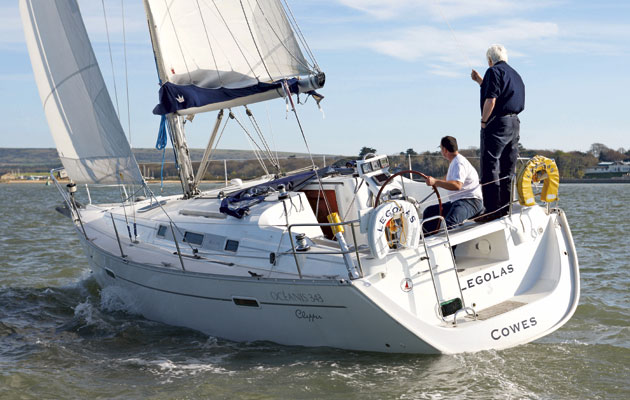
How to pass your Yachtmaster exam
The global standard of sailing qualifications is achievable for any experienced, competent skipper. Tom Cunliffe explains how to pass your…

12 expert skills to take you beyond Yachtmaster
Rupert Holmes outlines the skills that mark out the good sailors from the great ones, with experience and reflective learning…

Man overboard: tactics that really work for couples
The YM team get wet to see how well the MOB process works for shorthanded sailing. Here are our findings...
The day continued and each one of us went through our practical exercises with yet more scenarios thrown at us on the way.
Just as you think about breathing freely, it’s time to be hauled below for more questions. Result!
My lights knowledge was better than my crewmates. But, we were all stumped by the exercise to interpret a radar chart.
We’d never used radar as we use AIS on Ragdoll instead.
In desperation, I even checked the Yachtmaster books I’d borrowed, but no joy.
At this point I was ready to volunteer to be the next MOB.
By the afternoon the breeze was pumping a good Force 6 off Cowes and my brother got his MOB exercise.
Despite being over- canvassed for the brisk conditions, the Dufour handled brilliantly, our bucket was safely retrieved with a bit of engine assistance.
But it really hit home that simply getting back to your MOB is only half the problem, and just how difficult full recovery onboard is in these conditions.
It was a huge relief to get back to Universal Yachting’s dock, and thankfully I parked the boat first time.
Looking in the mirror
We each had a really useful one-on-one feedback session with James, leaving us with a clear picture of our strengths and areas to work on.
We were seeking our knowledge gaps, and we certainly found them. Evidently for me, even having done courses like shore- based engine maintenance, how to do basic engine trouble shooting was something
I was weak on. I also found that my maths was an area that needed attention.
The experience highlighted what stress and tiredness can do to your ability to function ‘normally’.
Adapting to the pre-requisite to tell your crew what to do, and not discuss things, made if feel a bit surreal, but it does mean you can’t hide behind the knowledge of others, and is realistic if you are sailing with beginners.
Discoveries
Am I glad I did the Yachtmaster ? Absolutely. Did it achieve my goal? Yes, it did, but not in the way I expected.
Having felt complete failures at the time, however, it was amazing to pass and come away with a clear idea of our weaknesses, and ones I hadn’t been aware of before.
There’s much we want to try on Ragdoll , and have already discovered that our ‘highly recommended’ MOB ladder is impossible to use, even in a flat clam.
The learning curve continues…
4 Takeaways from the Yachtmaster Practical
- Understand the engine: Don’t rely on having had a look at the engine manual and your notes from your diesel engine course. Make sure you know the location of the fuel dipstick and the coolant header tank, know how to tighten the alternator fan belt, where the fuel and oil filters are, how to bleed air out the fuel system and have a plan to troubleshoot if the engine stops or overheats.
- Understand the boat: Try to do challenges regularly onboard, such as taking away instruments and engine; it’s surprising how quickly knowledge escapes you in times of stress. Take your boat out and get to know her characteristics. Find an empty marina and spend some time pontoon bashing – try coming in forward and astern. You need to know whether you have enough steerage astern and other boat-specific characteristics such as prop walk one way or another.
- Leadership roles: Although we don’t usually sail with one person solely in charge it was interesting to have the exam take place under these conditions. It did highlight how little official pre-emptive trouble shooting we tend to do. It’s well worth having a variety of ‘what if’ scenarios pre-planned ranging from safety critical MOB drills through to more off the cuff situations. ‘What if’ plans will also be useful for night sailing where what you are faced with might look quite different to what you think you will see from your planning at the chart table.
- Cheat sheets: Struggling through much of the maths for blind navigation forced me to create a number of cheat sheets. Even for those who do not struggle with such things, I’d strongly recommend writing some out anyway. The basic maths for tide and depth calculations might not seem that hard but when you are tired and stressed there is nothing better than having something that allows you do a quick common sense check.
A guide to the Rolex Yacht-Master
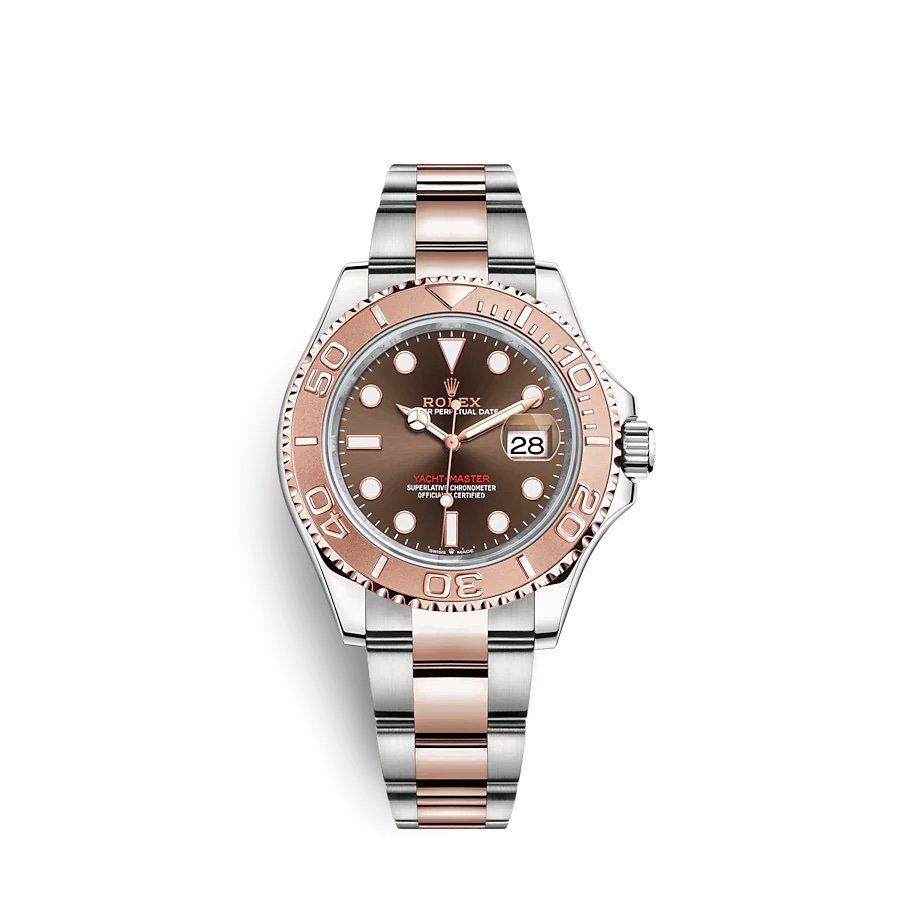
Over the years, the Rolex Yacht-Master watch has grown significantly, becoming one of the most diverse ranges of Rolex watch available.
The evolution of the luxury brand’s classic sports watch has extended beyond imaginable parallels, offering the avid collector various choices in bracelet style, bezel material and case size over three entire decades. As such, the Yacht-Master continues to prove itself a valuable and dependable mainstay within the manufacturer’s current catalogue, despite many models having become discontinued over the years. To define the Yacht-Master by Rolex, one would categorize it as a luxury sports watch, yet the collection can be broken down into two watches that remain incredibly similar to one another, despite a slightly different name.
. One is the Yacht-Master - a watch that can be considered the original sports model designed by Rolex, intended for setting sail with and enjoying whilst sailing aboard a luxury yacht. The Yacht-Master II, however, is designed for more precise functionality. Equipped with all the technology to enable an individual to record regatta timings, this younger distinction of the model is classified as a watch for racing a yacht as opposed to enjoying alongside a ride on one.
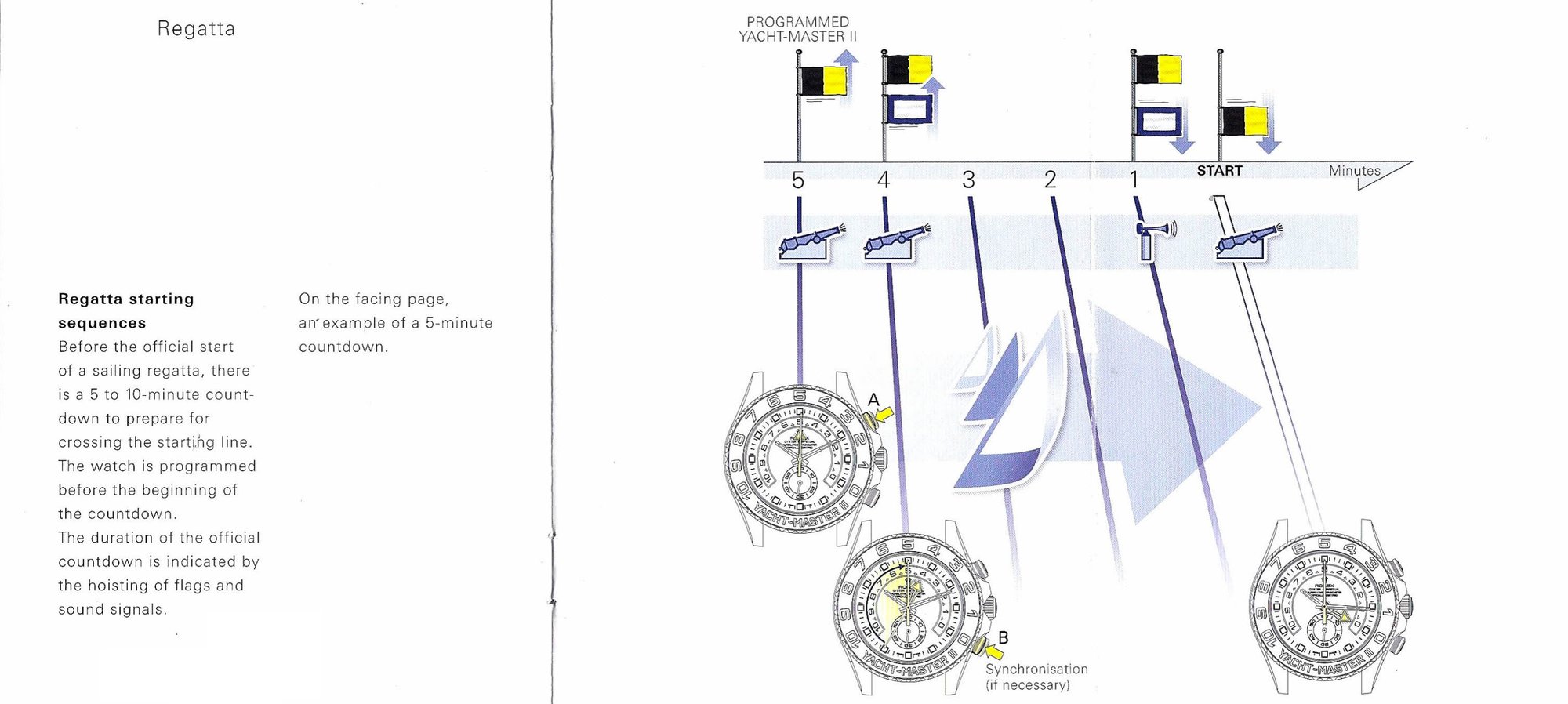
Whether wearing a Rolex Yacht-Master for aesthetical or practical reasons, however, its sleek looks and refined qualities are characteristics that are sought after far and wide amongst Rolex fans. Like with every Rolex, however, there are some factors to research and consider before investing in your very first Yacht-Master and these include pricing, history and features amongst many others.
What are the differences between the Yacht-Master and Yacht-Master II?
To break down the key differences between the Rolex Yacht-Master and the Rolex Yacht-Master II, here are a few quick facts. The Yacht-Master is available in sizes of 29mm, 35mm, 37mm, 40mm and 42mm and is manufactured in Rolesium, Everose Rolesor, yellow gold Rolesor, solid 18ct yellow gold, solid 18ct white gold and 18ct Everose gold. The watch offers running hours, minutes and seconds and features a date function at 3 o’clock. A bidirectional rotating bezel has a 60-minute scale upon its surface and each model promises a water resistance of 100 meters. The models are offered on an Oyster bracelet or Oysterflex bracelet. The Rolex Yacht-Master II, however, is available in a 44mm size and is offered in a solid stainless steel version, as well as Everose Rolesor, 18ct yellow gold and 18ct white gold. Function-wise, the models offer running seconds with an adjustable countdown timer with a mechanical memory. The watch also features a ring command bezel, along with 100-meter water resistance and is fitted on an Oyster bracelet.

A brief history of the Rolex Yacht-Master watch collection
A brief history of both the Rolex Yacht-Master and Yacht-Master II watches is beneficial before investing in a model from this range. Though not introduced until 1992, the Rolex Yacht-Master watch had foundations secured for its release much earlier than that. The brand had partnered with the New York Yacht Club back in 1958, laying down the roots to its heritage in sailing long before the iconic sports watch was conceptualized. By this point, Rolex had ready developed its first waterproof watch thanks to the 1926 Oyster case.

In 1966, the Gipsy Moth IV yacht was sailed 29,600 miles around the world by Francis Chichester, who wore a Rolex on his wrist amongst very few other measuring tools including a sextant and nautical chart. Thanks to the Rolex Oyster Perpetual watch he wore during his journey, time could be tracked amongst rough conditions for an entire 226 days whilst at sea. It put Rolex officially on the radar of seafarers as a manufacturer capable of producing robust and reliable tools for facing the challenging conditions experienced at sea.

In 1992 the world’s first official Rolex Oyster Perpetual Yacht-Master was released and was crafted entirely from 18ct yellow gold, cementing its status as a luxury tool watch. Over the next 15 years, Rolex would experiment with various case materials until in 2007, the first Yacht-Master II was born. Sportsmen could utilize this tool watch whilst regatta racing – its chronograph features stood out clearly and legibly across the surface of the dial. A programmable countdown timer enabled the individual to measure the countdown time before a race commences for improved precision and a better start to the competition. With flyback and fly-forward functionality, synchronization with the Race Committee was a breeze.

Current Popular Rolex Yacht-Master models
As mentioned, it is the Yacht-Master’s affinity with the sea and its diverse range of styles and case materials that make this collection so widely sought-after within the Rolex watch stratosphere. Paired with cutting-edge technology and primed for yacht race competing, the series has much to offer any luxury sports watch fan. Here are just a few Rolex Yacht-Master watches that have proven their popularity as both a tool and an investment since their release.
Rolex Yacht-Master ref 126622
Rolex Yacht-Master watches made from Rolesium make for an interesting talking point to wear with elegant attire and often make for sophisticated gifts to mark an anniversary or wedding day, especially for those who prefer their wristwatches to exude a very classic look. That said, Rolex packs a lot of modern technology into the design of a Yacht-Master watch such as the model 1266, which not only offers a very compact and manageable case size for those with a slender wrist but has also been forged from a material that is exclusive to the Yacht-Master watch range itself. Stainless Steel and platinum are materials chosen for their robust, corrosion-resistant and luxurious properties, whilst the three-link design of the oyster bracelet creates a timeless look whether paired with elegant or casual attire. Polished middle links and brushed outer links create a unique look against the wrist, especially when you consider that these finishes differ from those seen in the Rolex Submariner and Sea-Dweller models, which instead offer a fully brushed bracelet finish.
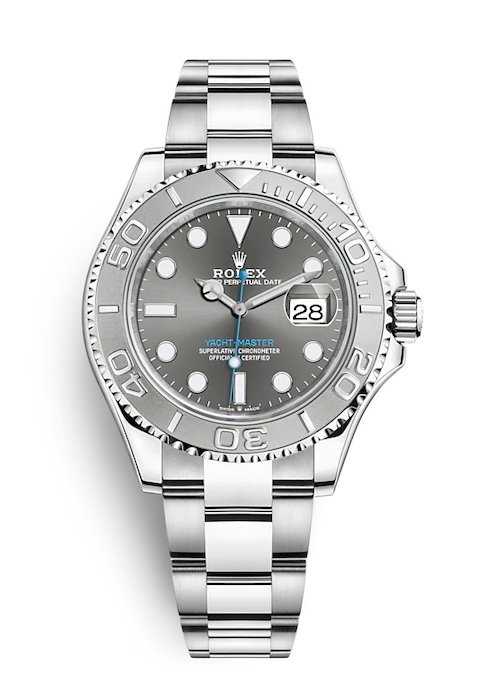
Rolex Yacht-Master ref 116680
One of the most popular Rolex Yacht-Master watches has to be the ref 116680 with a blue ceramic bezel. Rolex had begun equipping its watches with Cerachrom bezels back in the year 2005. This model was made available in stainless steel, two-tone Everose, or yellow gold, and since it belongs to the Yacht-Master II collection, measures a broad 44mm diameter. As of 2019, Rolex Yacht-Master II watches were equipped with the Calibre 3235 – a trusted workhorse for many of Rolex’s models. Framed inside this striking blue bezel is a white dial adorned with a small second sub-counter in blue at 6 o’clock, along with a countdown that can be programmed for a duration of between 1 and 10 minutes. The programming is memorized by the mechanism so that at a reset it returns to the previous setting and once launched, can be synchronized on the fly to match the official race countdown.

Rolex Yacht-Master ref 116655
The Rolex Yacht-Master ref 116656 is, without a doubt, one of the most coveted and popular models from this series of luxury sports watches. The model not only features a matte black ceramic bezel but features a set of two-textured, highly polished and raised numerals upon its sandblasted surface. The watch is fitted to an Oysterflex bracelet, promising all-round comfort and thanks to its unusual choice of contrasting rich black and luxurious pink gold colours, can be enjoyed by both male and female Rolex fans alike. An Everose case and gold serrated ring complete its look, combining nicely with the elegant black bezel, whilst on the display itself, cathedral-type hands and a cyclops date window reside.

The Rolex Yacht-Master II ref 226659
Slightly larger in size is the 42mm Rolex Yacht-Master II watch with the reference 226659, which features a stunning 18ct white gold case and bezel with a striking black Cerachrom bezel inlay for precise tracking of elapsed time. The Oysterflex bracelet is just one of the many appealing features of the Rolex Yacht-Master series. Although creating the aesthetic and sporty look of a rubber strap with its outer elastomer rubber shell in black - inside the structure of the bracelet is a series of flexible metal inserts. The Rolex Yacht-Master II ref 226659 debuted in 2019 with the desirable Calibre 3235 secured to the heart of its case, creating plenty of power reserve for those occasions when taken off the wrist, promising superior reliability and accuracy. Its classic black and white gold colourway make it easy to pair wot formal, casual or elegant attire.

There will always be plenty of reasons to invest in a Rolex Yacht-Master watch. Having been equipped with a reliable movement and a set of unique features that enable superior regatta timings out on the water, there is little else on the market that matches the supreme craftsmanship and instantly recognizable aesthetics of the iconic Rolex Yacht-Master watch. Whether you have any use for the polarizing watch’s regatta timer feature or not, it is one of the most niche complications watches imaginable. The Yacht-Master will always be a timepiece that holds its value, symbolizing a brand of significant provenance and value.
More Rolex guides
To find out more about which Rolex hold their value you can read more of our guides where we cover all Rolex Nicknames or our classic guide to the Day Date models and our comparision with their sister brand: Rolex vs Tudor .
Subscribe our newsletter for more news related content and find our quick comparitive guides to help you d ecide which watch you should buy next:
Breitling vs Rolex
Cartier vs Rolex
Audemars Piguet vs Rolex
Tag Hurer vs Rolex
- Latest Releases
- Certificates of Competence
- RYA Yachtmaster
What is an RYA Yachtmaster?
The RYA Yachtmaster® Certificate of Competence is often the ultimate aim of aspiring skippers. It is a well known, highly respected qualification worldwide, proving your experience and competence as a skipper. Unlike other qualifications in the cruising programme, there is no formal training course to become an RYA Yachtmaster. Instead, provided you have sufficient experience, certification and seatime, you can put yourself forward for an exam to test your skills and knowledge. There are a number of RYA navigation courses that will help you prepare for your exam. Many RYA Yachtmaster candidates also choose to book themselves into an RYA training centre for some specialised exam preparation training, but this is not compulsory.
You are capable of coastal passages
You are competent to undertake passages up to 150 miles offshore
You have the knowledge and experience to sail worldwide
- Arranging your exam
The Coastal and Offshore exams are practical tests afloat, and the Ocean is an oral exam. Find out more about qualifying passages, exam fees and how to book.
With an RYA Yachtmaster Coastal, Offshore or Ocean Certificate of Competence you can start a career at sea.
You'll need to have the appropriate qualification for the vessel and area of operation.
If you want to work commercially, you'll need a commercial endorsement.
Find out more about other RYA professional qualifications.
- Getting the most from a Yachtmaster Fast Track course
Can you really become an RYA Yachtmaster in as little as 14 weeks? Check out our top tips for getting the most from a Yachtmaster Fast Track course...

The Watch Of The Open Seas: History Of The Rolex Yacht-Master

Instagram: @rolex
In the year 1992, Swiss watchmaker Rolex would debut a new model line at the Baselworld show that was strikingly similar to the already-popular Submariner. It featured the same 40mm Oyster case with a rotating bezel, the same chronometer-certified caliber, and the same Oyster bracelet.
Seemingly the only difference between the two was the white dial of that first Yacht-Master, a style which has never been an option on a Sub, and the inferior depth rating of 100m when compared to the Sub’s 300m.
Yet, the Yacht-Master was well-received upon launch, and with the passing of time, the yachting-inspired model has evolved and pioneered its own path within Rolex’s catalog.
Read on with us as we go back to the beginning and track the catalysts that paved the way for the most recent Yacht-Master release, the Yacht-Master 42 (226659), to become one of the hottest sports timepieces of the year.

History Of The Rolex Yacht-Master
We’ve broken down our overview of the Yacht-Master into the following segments:
- Release Of The Yacht-Master
The Submariner/Yacht-Master Theory
- Mid-Size & Ladies’ Yacht-Master
- Platinum (Rolesium) Yacht-Master
The Maxi Dial Yacht-Master
- Two-Tone Rolesor Yacht-Master
The Yacht-Master II
- Six-Digit Yacht-Master
The Oysterflex Yacht-Master
Keep scrolling to read this guide from its beginning, or use the links above to jump down to a specific point.

Browse Bob’s Watches Rolex Catalogue
The Release Of The Yacht-Master
The first Yacht-Master watch was launched in 1992 under reference number 16628. It featured a yellow gold case, a bidirectional graduated bezel, and a matching full-gold Oyster bracelet. Its dial was white with black hour indices, while at center were gold Mercedes hands, and beating inside was the 3135 movement.

Rolex ref. 16628. Instagram: @m_j_watches
Previous to the Yacht-Master’s introduction, Rolex had not released a new model line in a quarter century. So, why did they go with the Yacht-Master, a design that risked being a detractor from their existing Submariner? Let’s take a look at the inspiration.
The sport of yachting is one which demands precise timing and extreme coordination of the entire crew for optimal performance, particularly in offshore competitions.

Prototype Daytona Yacht-Master ref. 6239. Image: Christies.com
Rolex believed their waterproof and chronometer-grade timepieces to be more than qualified to handle the knocks of a regatta and keep ticking accurately. The brand is also notorious for their marketing prowess, which led them to act quickly in establishing an association with the sport.
Beginning in 1958 with their first sponsorship of a race, the relationship has endured until today, when the brand sponsors over a dozen international yachting events.
Nevertheless, it’s hard to deny that there exists a large gap between first contact in 1958 and the release of the yacht-inspired timepiece in the early ’90s. Why wasn’t the Yacht-Master released earlier on?
Well, Rolex played around with the idea of yachting chronograph early on, though it never materialized. All that’s left of these trials are an extremely limited number of Daytona ref. 6239 chronograph prototypes with a 39mm case (vs standard 36mm) and modified regatta dials.
Unfortunately, the Yacht-Master concept was scrapped and would not reappear until decades later.

When it did return, none of the previous Yacht-Master’s DNA was there. Furthermore, the 1992 Yacht-Master was bizarrely similar to the 16610 Sub of the time.
Interestingly enough, Rolex folklore tells of a time in the ’80s when the brand sought to update their Submariner . What resulted was less of an update and more of an overhaul, manifested as what we know now as the first Yacht-Master.
Apprehensive of the repercussions that making such aggressive design changes to their staple offering could bring, the brand chose instead to release the watch intended to be a new Submariner as the reborn Yacht-Master instead.
The move worked, and the new Yacht-Masters started flying off the shelves. The Yacht-Master was perceived as a more luxurious Sub, though its bidirectional bezel proved useful for on-the-fly countdowns which are critical in sailing competitions. The waterproof nature of the Oyster case further cemented the Yacht-Master as the ideal first mate.
Mid-Size & Ladies’ Yacht-Master
In 1994, just two years after the debut of the 16628, Rolex would introduce the same design but in smaller case sizes. These were:
- Ref. 68628: Yacht-Master “Mid-Size” in 35mm
- Ref. 69628: Yacht-Master Ladies’ in 29mm
This marked the first time that Rolex ever offered one of their sports models in a smaller case size; all previous instances of case size changes were increases as opposed to reductions. It has been speculated that the smaller cases were intended for the Asian market.

Yacht-Master ref. 16628. Instagram: @thewatchcentre
In the same year, Rolex also offered the same 16628 but this time with a deep blue dial. Blue dials tend to make for broadly-liked watches, and coupled with the gold case and bracelet, the new version was once again a hit.
The Platinum (Rolesium) Yacht-Master
The next update to the model line would come in 1999 with yet another home-run: the Rolesium Yacht-Master. The new watch featured a stainless steel case and bracelet with a platinum dial and platinum-insert bezel. Rolesium, a term registered by Rolex back in the ’30s for a combination of steel and platinum in a watch, was finally put to use.
The new platinum Yacht-Master ref. 16622 was not only more accessible than the previous all-gold varieties, it was also more versatile. This would lead the 16622 variety to become the face of the Yacht-Master line.
In fact, many online resources erroneously label it the first Yacht-Master ever; this should offer an idea of how emblematic it is in the watch industry.
The 16622 also presented a new dial and hand style that would mark Rolex as a whole through to the modern day. The new Yacht-Master boasted what is now recognized as the “maxi dial”.

Rolex Yacht-Master 16628 w/ maxi dial. Instagram: @kellokonttori
The maxi dial is characterized by oversized hour indices as well as larger hands at center. To the untrained eye, the difference may be difficult to spot, though experienced collectors will note the change instantly.
The maxi dial became the style of choice for all modern Rolex sports watches, though it got its start in the 1999 platinum Yacht-Master. A Submariner would first feature a maxi dial in 2003, with the release of the 50th anniversary Rolex Submariner “Kermit” (16610LV).
All versions of the Yacht-Master produced after the introduction of the maxi dial would also feature the new dial design. This included the blue, gold, and white dial versions from years past.
The Two-Tone (Rolesor) Yacht-Master
Six years after the Rolesium Yacht-Master came to be, Rolex would once more put on display their mixed-metal Rolesor style in the two-tone Yacht-Master 16623.

Yacht-Master ref. 16623. Instagram: @v.davidofftimepieces
The 2005 debuts possessed a 40mm steel case, a yellow gold bidirectional bezel, and a two-tone Oyster bracelet. As far as dials, many of the previous styles were also available like the black-on-white, though mother of pearl version were also introduced.
It was during Baselworld 2007 when Rolex would introduce the Yacht-Master’s younger and much larger sibling, the Yacht-Master II. Whereas the original Yacht-Master was very close functionally to the Sub, the Yacht-Master II was completely the opposite.
It can be said that the only overlap between the YM and the YMII is be the name, as the second iteration looks like a whole new watch. This time, though, it’s clear that the watch has been designed with the needs of yachting professionals in mind.

The first Yacht-Master II were marked by a 44mm Oyster case, an Oyster bracelet, a white dial, and a blue Cerachrom (ceramic) Ring Command bezel. The first two references, 116688 and 116689, were made of yellow gold and white gold, respectively.
Powering the YMII was another innovation – Rolex’s in-house calibre 4161. It features the COSC-chronometer certification and 72-hour power reserve that are today’s standard, though they were industry-leading at the time. Most notable, though, was the 4161 movement’s functions.
The new caliber boasted a “ programmable countdown with mechanical memory and on-the-fly synchronization. ” Naturally, the programming of the movement required the use of the Ring Command bezel, a feature which had also never been encountered on a Rolex watch before.
In later years, Rolex would go on to release Rolesor and full-steel versions of the Yacht-Master II, both of which have been relatively successful. The Yacht-Master II has certainly earned a spot in the brand’s catalog, and is sure to stick around for next couple of decades.
The Six-Digit Yacht-Master

Yacht-Master 116622
Twenty years after it debuted as the 16628, the Yacht-Master would see in 2012 the modernization that had been sweeping Rolex’s other model families.
Aside from receiving a new six-digit reference number (116622), subtle aesthetic changes were also present, as was an outstanding new dial option – the Cobalt Blue dial.
The case was now a “super case”, which retained the 40mm diameter but was styled differently. The bezel was now completely platinum, where previous versions were made of steel with a platinum insert. The Oyster bracelet had likewise been upgraded.
A platinum bezel / platinum dial option was still part of the collection and therefore received the same upgrades. Unfortunately, this iconic “albino” look would be completely discontinued in 2017.
The subsequent and most recent significant change to the Yacht-Master family took place in 2015, when Rolex first introduced the Everose Yacht-Master 40 ref. 116655.

Rolex Everose Yacht-Master on Oysterflex bracelet
The newest iteration of the YM possessed some new features. The case was made of Everose, and the bezel now boasted a black Cerachrom insert. Securing the watch to the wrist was another Rolex first – the Oysterflex rubber ‘bracelet’.
Before the 116655, no Rolex watch had ever sported a rubber band. The brand still refers to it as a bracelet given the metal elements within the band, but these are not obvious even with the watch in the hand.
This same style of Yacht-Master would receive the next update in 2019, when Rolex introduced the Yacht-Master 42 in white gold.
What’s Next?
With the recent changes that the Yacht-Master line has had, it is clear that Rolex intends to keep this model family alive and well for years to come. Consumers are likewise responding to each new release, offering plenty of feedback with their pocketbooks.
If you’d like to read up on any of Rolex’s other model families, make sure to check out some of our extensive watch guides below:
- History Of The Rolex Cosmograph Daytona
- Overview Of The Most Luxurious Pilot’s Watch: The GMT-Master
- How Did The Day-Date Become The President’s Watch?
- Review Of Rolex’s Longest Running Watch Model
- Rolex Watches That Could Become The Investment Of A Lifetime
"I have always been a fan of the Yacht-Master, but I had no idea that it didn't exist until the 1990s. Thanks for the information, and thanks for keeping it entertaining. Well done!"

Watch Content

Leave A Comment Cancel reply
This site uses Akismet to reduce spam. Learn how your comment data is processed .
How to Set and Use the Rolex Yacht-Master II
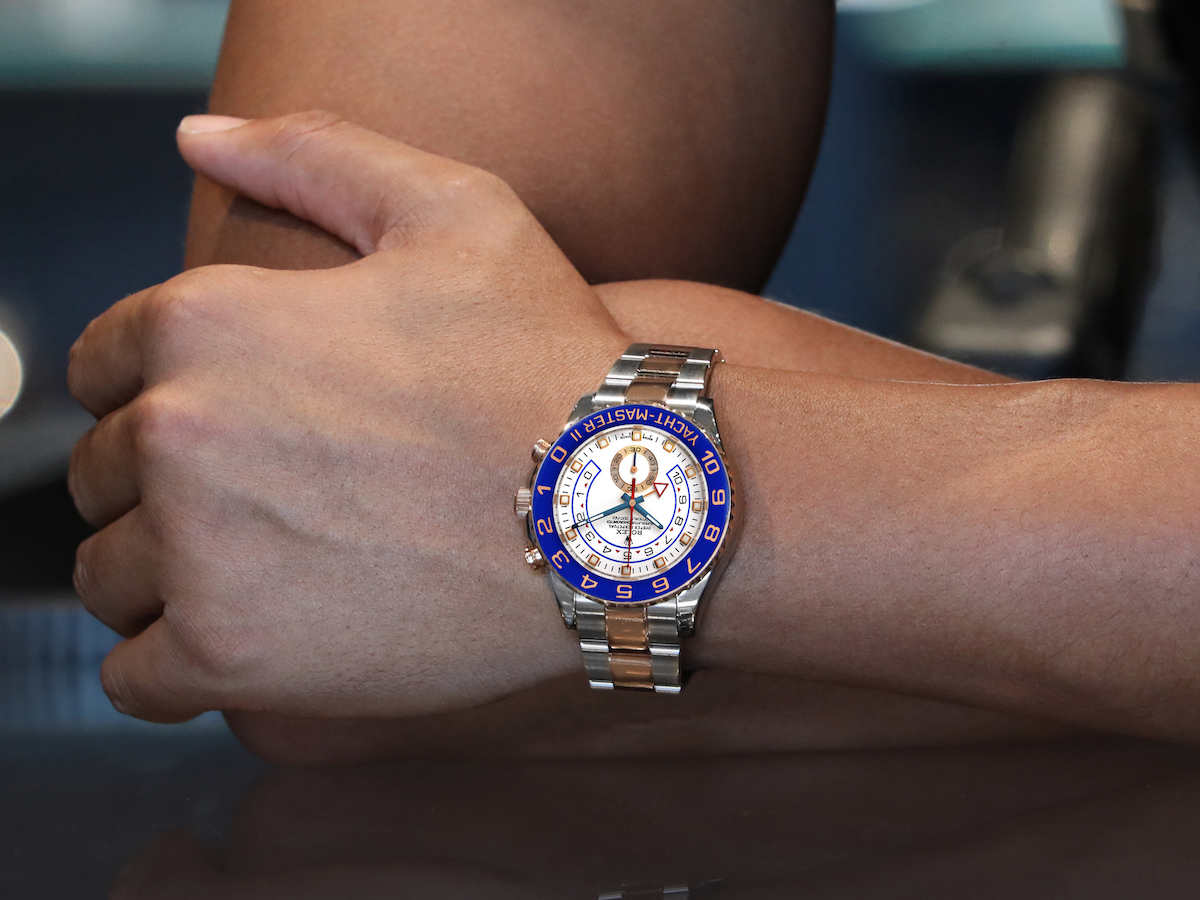
Regatta races are an exciting way to test your sailing ability. The Rolex Yacht-Master II has a countdown timer so you can time your regatta race.
Not only does it look fantastic, but its highly specialized functions are powered by one of the most impressive movements Rolex has released to date. Using these functions though can be a frustrating and complicated path.
While there are number of steps to the process, Rolex designed it to be quick and simple once you get to know it.
With this guide, you’ll learn how to set the Rolex Yacht-Master II for a regatta, as well as how to use it during the race.
What is a regatta watch?
First of all, what is a regatta watch? The Rolex Yacht-Master II’s countdown timer is used to time events that involve boats or other competitive pursuits, such as sailing races, chariot races, and even football matches.
The goal of these events is to get from point A to point B in the fastest amount of time possible. To do this, teams will use the count-down timer on their watches to measure their progress and determine whether they should increase their speed or slow down if they are falling behind.
You’re probably wondering why you would need a watch with such an advanced feature if you aren’t partaking in regatta activities yourself. Well, there are plenty of instances where having the ability to time something accurately can be useful. Even everyday tasks like boiling your eggs perfectly or recording the length of timeouts count! The possibilities are endless.
How to Set your Countdown Timer on a Rolex Yacht-Master II
The countdown timer on the Rolex Yacht-Master II is an elegant and useful feature. You’ll need to set it up though before the beginning of the regatta to start the countdown at the appropriate time.
To set the countdown timer:
1. The timer needs to have stopped. If it is still going, push the upper pusher on the right hand side of the dial/case to stop the timer.
2. Once the timer is stopped, you need to turn the bezel to the left, or counterclockwise, a quarter turn. It will stop at a quarter as that’s as far as it can go, and it will click into place for you.
3. Push the bottom pusher on the right hand side of your case. When you push this button, it will stay pushed down. This bounces the second hand to zero or the 12 o’clock mark. The minute hand will also return itself back to wherever you previously had it set. Having the lower pusher depressed blocks you from pressing the upper pusher.
4. Unlock the crown by turning it counterclockwise. The crown is the center knob at the 3 o’clock position on the right hand side of your case. Turn the crown clockwise setting it to the minute that you need.
5. Once you’ve set the duration of your preferred countdown, you’re going to return to the bezel. Turn the bezel this time in a clockwise direction until the click, or a quarter turn. This action unlocks the upper pusher and lets go of the lower one.
6. Push your crown back in and rotate it clockwise until it locks. This ensures that your watch keeps its water resistance.
How to Use the Countdown Timer on your Rolex Yacht-Master II
The countdown timer on the Yacht-Master II is used to display how much time has passed in a race (or other endeavors). Many people use this feature when they’re tracking their own races, but it’s also useful for non-sporting activities.
Here’s how to use it:
1. Your top or upper pusher starts and stops your countdown. This is similar to other traditional Rolex complications like what you’d find on the Daytona . The lower pusher resets the timer.
2. The difference with the Yacht-Master from other chronograph watches is that you can jump forward or backward to the closest minute with a one touch to the lower button. There’s no need to reset the counter, wasting valuable time in a race.
3. To use the fly-back or fly-forward functions mentioned above, while the timer is running, give one quick press to the lower pusher. The timer resets itself to the closest minute while still running. This allows you to instantly start measuring the next duration, with no time lost.
Timing a Regatta Race using the Rolex Yacht-Master II
Ok, so your timer is set, and you know how to run it, but what are you supposed to do with it during a regatta race?
Regatta Racing (photo: Rolex)
1. If you’re unfamiliar with why you need a timer in a regatta, this isn’t unusual. A gun and a wave of a flag signal the countdown to the start of the race. When you see or hear this, then press the top pusher that starts the timer. If you did your job, your timer was set at the needed number of minutes ahead of time. At this point, the second hand is tracking the elapsed time since you started. The minutes hand will move every 60 seconds tracking the time until it hits the finish or zero. End of a countdown.
The Rolex Yacht-Master II in Steel and Everose Gold (photo: Rolex)
2. There may be a point where you’ll have to pause and resync your timer. You’ll want it to maintain sync with the official clock. Being on-time is important in a regatta. This is easy to accomplish. When you hear the second or third prep signals, the official ones, press the lower pusher. This resets the second hand back to the beginning, or zero, synchronizing the minute hand back to the closest minute, thus syncing with the official clock.
3. At this point, the race has begun. Your personal countdown has finished and you’re off. Now you can restart your timer by pressing the top pusher to stop it and then the bottom pusher to reset it to the last programmed setting.
How to Use Your Rolex Yacht-Master II: Final Thoughts
Now you know how to use your Rolex Yacht-Master II in a regatta race. It’s a great watch that will make timing your races much easier and more accurate. Better yet, use your timer for anything you need a countdown for.
On the market for a Rolex Yacht-Master? Check out our wide selection of Rolex Yacht-Master watches at SwissWatchExpo.com.

Is Yacht Master Worth It? (Examining The Benefits)

Are you looking for a way to take your sailing and boating skills to the next level? Becoming a Yacht Master may just be the answer youre looking for.
In this article, well be discussing the qualifications, benefits, types, cost, and preparation involved in obtaining Yacht Master Certification.
Well also talk about finding a Yacht Master training provider, and what to expect after certification.
So, if youve been considering becoming a Yacht Master, read on to learn if it is really worth it.
Table of Contents
Short Answer
Yacht Master certification is a valuable and highly sought after qualification for those looking to pursue a career in the yachting industry.
It is an internationally recognised qualification that provides evidence of the skills and knowledge required to be a competent yacht skipper.
It also provides an opportunity to network with industry professionals and can open up career opportunities.
Ultimately, whether or not the Yacht Master certification is worth it depends on an individual’s career aspirations and their commitment to the certification process.
Qualifications Needed to Obtain Yacht Master Certification
To obtain Yacht Master certification, individuals must meet certain qualifications.
These include, but are not limited to, having at least five years of experience on the sea, completing a minimum number of miles, and passing a written exam.
The experience requirement typically involves having served on a sailboat or motorboat for at least five years, as well as having obtained a captain’s license from a recognized maritime authority.
Additionally, individuals must have completed a minimum number of miles to demonstrate their knowledge of navigation, safety, and other maritime skills.
The written exam for Yacht Master certification covers a variety of topics, including navigation, safety, seamanship, boat handling, and maintenance.
The exam is typically administered by a recognized maritime authority and consists of multiple-choice and essay questions.
Upon successfully completing the exam, individuals will receive their Yacht Master certification.
In addition to the qualifications and exam requirements, individuals must also complete a practical assessment.
This assessment typically involves demonstrating the skills they have acquired during their experience on the sea, such as navigation, boat handling, and safety.
Upon successfully completing the practical assessment, individuals will receive their Yacht Master certification.
Overall, obtaining Yacht Master certification requires individuals to meet certain qualifications and pass the necessary exams and assessments.
This certification is a great way to gain recognition and credibility in the yachting industry, and can open up a variety of job opportunities.
Benefits of Obtaining Yacht Master Certification

Obtaining Yacht Master certification is an important step for anyone who is looking to pursue a career in the yachting industry.
The certification offers numerous benefits, including providing individuals with the necessary knowledge and skills to safely and confidently operate a vessel.
It is also a great way to gain recognition and credibility in the yachting industry, and can open up a variety of job opportunities.
The Yacht Master certification covers a range of topics, including navigation, seamanship, and safety regulations.
It also includes instruction on how to safely and effectively operate a vessel, as well as how to respond to emergency situations.
The certification also requires completion of basic first aid courses, which can be incredibly useful in the event of an accident or injury on board.
In addition to the knowledge and skills obtained, Yacht Master certification is an invaluable asset when it comes to job opportunities.
Employers in the yachting industry often look for applicants who have a certificate or license that demonstrate their abilities and qualifications.
Having a Yacht Master certification can increase an individual’s chances of being hired for a position, as it demonstrates that they have the necessary skills and knowledge to safely and confidently operate a vessel.
Finally, obtaining Yacht Master certification is beneficial for those looking to further their career prospects in the yachting industry.
The certification is recognized by many employers, and is often required for certain positions.
Having this certification can open up a variety of job opportunities in the industry, as it demonstrates that an individual has the necessary skills and knowledge needed to succeed in the field.
In conclusion, Yacht Master certification is definitely worth it for those looking to pursue a career in the yachting industry.
The certification provides individuals with the necessary knowledge and skills to safely and confidently operate a vessel, and can open up a variety of job opportunities.
It is also a great way to gain recognition and credibility in the yachting industry, and can be an invaluable asset when it comes to furthering career prospects.
Types of Yacht Master Certification
Yacht Master certification is offered by various organizations, and is divided into two main categories: offshore and inshore.
Offshore Yacht Master certification is for those who want to pursue a career in the yachting industry, and is the more comprehensive of the two.
It is designed to give you the necessary knowledge to safely and confidently operate a vessel both offshore and inshore.
It covers topics such as navigation, boat handling, safety, and meteorology.
Inshore Yacht Master certification is for those who want to pursue a career in the yachting industry, but do not need the full scope of the offshore certification.
It covers topics such as navigation, boat handling, safety, and meteorology, but does not include topics such as navigation in open waters or meteorology.
It is designed to give you the necessary knowledge to safely and confidently operate a vessel in inshore areas.
No matter which type of Yacht Master certification you choose, it is always worth it.
With the correct knowledge and skills, you can open up a variety of job opportunities in the yachting industry.
With the Yacht Master certification, you can gain recognition and credibility as a professional in the yachting industry, and have the confidence to safely and confidently operate a vessel.
Cost of Obtaining Yacht Master Certification

One of the main factors to consider when deciding whether Yacht Master certification is worth it or not is the cost associated with obtaining the certification.
In general, taking a Yacht Master course can cost anywhere from a few thousand dollars to tens of thousands of dollars, depending on the course provider and the type of certification sought.
However, the cost of the course does not include the cost of the necessary equipment, such as navigation instruments, that must be purchased in order to take the course.
Additionally, the cost of the course may also vary depending on the length of the course, the type of boat used, and the instructor’s experience.
All of these costs should be taken into consideration when making the decision to pursue Yacht Master certification.
Preparing for Yacht Master Certification
Preparing for your Yacht Master Certification is a critical step in ensuring that you are ready to take the exam and excel in the yachting industry.
It’s important to understand the expectations and the scope of the certification, as well as the types of courses and exams that are available.
The Yacht Master Certification is divided into three levels: Basic, Intermediate, and Advanced.
Each level will require a different amount of training, and the cost of each level will vary.
It’s important to understand the requirements of each level, as well as the specific courses and exams that are needed in order to gain the certification.
When preparing for the Yacht Master Certification, it’s important to understand the differences between the different levels, and to decide which level is appropriate for your goals.
You should also understand the range of courses and exams that are offered in order to gain the certification, as well as the expected length of time it will take to complete the course.
It’s also important to understand the expectations that come with the Yacht Master Certification, such as the need to have a good knowledge of maritime rules and regulations, as well as the ability to operate a vessel in a safe and responsible manner.
Additionally, it’s important to understand the importance of the exams that are required in order to gain the certification, and the type of preparation that will be necessary in order to ace them.
By understanding the expectations and the scope of the Yacht Master Certification, as well as the types of courses and exams that are available, you can better prepare yourself for the exam and ensure that you are ready to take the test and excel in the yachting industry.
Finding a Yacht Master Training Provider

For those looking to earn their Yacht Master certification, it is important to find a reliable and reputable training provider.
There are many organizations that offer Yacht Master certification courses, so it is important to do some research before settling on one.
When shopping around for a training provider, it is important to look at the course curriculum, the instructor qualifications, and the overall cost of the course.
Most training providers will also provide a comprehensive overview of the certification process, as well as a list of the requirements that must be met in order to be eligible for the certification.
Additionally, it is important to consider the type of vessel that will be used for the course, as this can have an impact on the overall cost of the certification.
Taking the time to research and compare different providers will help ensure that you are getting the best value for your money.
What to Expect After Obtaining Yacht Master Certification
Once you have obtained your Yacht Master certification, you can expect to have a wide range of job opportunities open to you.
This certification is an important credential for anyone looking to work in the yachting industry, and having it will show employers that you have the necessary knowledge and skills to safely and confidently operate a vessel.
With the Yacht Master certification, you will be able to apply for positions as a captain, engineer, or navigator on a luxury yacht, or even become a deck hand on a smaller vessel.
At the same time, having the Yacht Master certification will also make you eligible for a number of other positions in the yachting industry, such as working as a sailing instructor, charter boat captain, or even a marine surveyor.
With the right experience and qualifications, you may even be able to break into the corporate side of the yachting industry, such as working in a marina or working as a boat broker.
In addition to job opportunities, obtaining the Yacht Master certification is also a great way to gain recognition and credibility in the yachting industry.
Having this certification will demonstrate to employers that you have the knowledge and experience to safely and confidently operate a vessel, and it will open up doors for you in the yachting industry.
Finally, obtaining the Yacht Master certification can also be a great way to build your network in the yachting industry.
After you have obtained your certification, you will be able to join various yachting organizations and events, which will give you access to a wide range of contacts and industry professionals who can help you further your career.
Overall, obtaining the Yacht Master certification is definitely worth it for anyone looking to further their career prospects in the yachting industry.
With this certification, you will be able to open up a variety of job opportunities, gain recognition and credibility in the industry, and even build your network of contacts in the yachting industry.
Final Thoughts
Overall, obtaining Yacht Master certification is definitely worth it for those looking to further their career prospects in the yachting industry.
It provides individuals with the necessary knowledge and skills to safely and confidently operate a vessel, and is the perfect way to gain recognition and credibility in the industry.
If you’re considering getting certified, make sure to research the qualifications needed, the different types of certifications available, and the cost associated with obtaining certification.
Additionally, it is important to find a reputable training provider and prepare accordingly to ensure you are successful in obtaining your Yacht Master certification.
Don’t wait any longer – get started on the path to becoming a qualified Yacht Master today!.
James Frami
At the age of 15, he and four other friends from his neighborhood constructed their first boat. He has been sailing for almost 30 years and has a wealth of knowledge that he wants to share with others.
Recent Posts
Does Your Boat License Expire? Here's What You Need to Know
Are you a boat owner looking to stay up-to-date on your license requirements? If so, youve come to the right place! In this article, well cover everything you need to know about boat license...
How to Put Skins on Your Boat in Sea of Thieves? (Complete Guide)
There is a unique sense of pride and accomplishment when you show off a boat you customized to your exact specifications. With Sea of Thieves, you can customize your boat to make it look like your...
.css-1obzumv{font-weight:700;font-size:clamp(1.875rem, 1.25rem + 1.5625vw, 3.125rem);line-height:1.2;margin-bottom:1rem;line-height:1.1;}.css-1obzumv:lang(th){line-height:1.5;} Yacht-Master II .css-18uwo57{font-size:clamp(1.125rem, 1.0625rem + 0.1563vw, 1.25rem);line-height:1.6;font-weight:300;line-height:1.2;text-wrap:balance;}.css-18uwo57 span{display:block;} Oyster, 44 mm, Oystersteel Reference 116680
View in night mode
Discover in 360°
The art of command
The Oyster Perpetual Yacht-Master II in Oystersteel with an Oyster bracelet and a bidirectional rotatable bezel with a blue Cerachrom insert .
Ring command bezel, a synchronized countdown.
Rolex achieved perfection when it turned its attention to redefining the purpose and functionality of the bezel. Typically, a bezel operates independently from the internal mechanism; however, the Ring Command bezel in the Yacht-Master II regatta chronograph operates in conjunction with it.
As a mechanical component linked to the movement, the bezel literally acts as the key to the programmable countdown, allowing it to be set and synchronised to the sequence of race start times. Complex in design, but simple in use, it is functionally beautiful.
A characteristic aesthetic
The Yacht-Master II is equipped with a new dial, and new hands that are characteristic of Rolex Professional models, enhancing legibility and sharpening its aesthetic appeal. The dial now features a triangular hour marker at 12 o’clock and a rectangular hour marker at 6 o’clock for more intuitive reading of the watch.
A luminescent disc on the hour hand clearly distinguishes it from the minute hand. The Yacht-Master II’s countdown can be programmed for a duration of between 1 and 10 minutes. The programming is memorized by the mechanism so that at a reset it returns to the previous setting. Once launched, the countdown can be synchronized on the fly to match the official race countdown.
Oystersteel
Highly resistant to corrosion
Rolex uses Oystersteel for its steel watch cases. Specially developed by the brand, Oystersteel belongs to the 904L steel family, alloys most commonly used in high-technology and in the aerospace and chemical industries, where maximum resistance to corrosion is essential.
Oystersteel is extremely resistant, offers an exceptional finish once polished and maintains its beauty even in the harshest environments.
The Oyster bracelet
Alchemy of form and function.
The Oyster bracelet is a perfect alchemy of form and function, aesthetics and technology, designed to be both robust and comfortable. It is equipped with an Oysterlock folding clasp, which prevents accidental opening and the Easylink comfort extension link, also exclusive to Rolex.
This ingenious system allows the wearer to increase the bracelet length by approximately 5 mm, providing additional comfort in any circumstance.
More Yacht-Master technical details
Reference 116680
Model case .css-1tg8aam{--iconSize:12px;--iconStrokeWidth:2px;height:var(--iconSize);position:relative;width:var(--iconSize);}.css-1tg8aam::before,.css-1tg8aam::after{background:currentColor;content:"";display:block;height:var(--iconStrokeWidth);left:0;position:absolute;right:0;top:50%;-webkit-transition:-webkit-transform 0.6s;transition:transform 0.6s;will-change:transform;}@media (prefers-reduced-motion){.css-1tg8aam::before,.css-1tg8aam::after{-webkit-transition:none;transition:none;}}.css-160voq8 .css-1tg8aam::after{-webkit-transform:rotate(90deg);-moz-transform:rotate(90deg);-ms-transform:rotate(90deg);transform:rotate(90deg);}.no-js .css-1tg8aam{display:none;}
Oyster, 44 mm, Oystersteel
Oyster architecture
Monobloc middle case, screw-down case back and winding crown
Bidirectional rotatable Ring Command bezel. Blue Cerachrom insert in ceramic, moulded numerals and inscription
Winding crown
Screw-down, Triplock triple waterproofness system
Scratch-resistant sapphire
Water resistance
Waterproof to 100 metres / 330 feet
Perpetual, mechanical, self-winding, regatta chronograph
4161, Manufacture Rolex
-2/+2 sec/day, after casing
Centre hour and minute hands, small seconds hand at 6 o'clock. Programmable countdown with mechanical memory and on-the-fly synchronization. Stop-seconds for precise time setting
Paramagnetic blue Parachrom hairspring
Bidirectional self-winding via Perpetual rotor
Power reserve
Approximately 72 hours
Oyster, three-piece solid links
Folding Oysterlock safety clasp with Easylink 5 mm comfort extension link
Highly legible Chromalight display with long-lasting blue luminescence
Certification
Superlative Chronometer (COSC + Rolex certification after casing)
Learn how to set the time and other functions of your Rolex watch by consulting our user guides.
Yacht-Master II
Contact an Official Rolex Retailer
Only official Rolex retailers are allowed to sell and maintain a Rolex watch. With the necessary skills, technical know-how and special equipment, they guarantee the authenticity of each and every part of your Rolex and help you make the choice that will last a lifetime.
Watches you may like
These watches have been selected for you. Add them with the heart icon to your favorites.
Shop New Arrivals
Rolex Bezels: How to Use the Yacht-Master Bezel
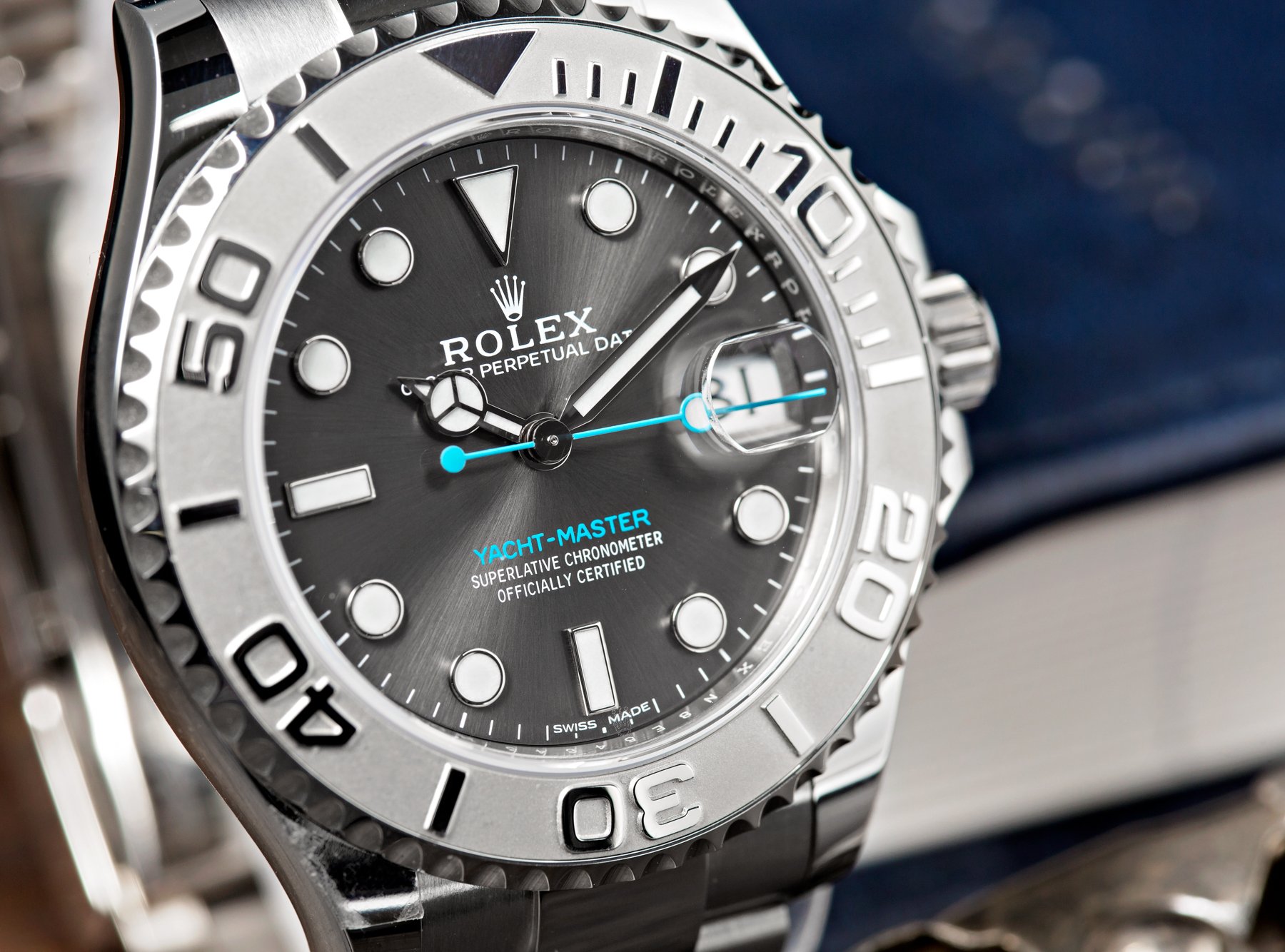
When Rolex developed the Yacht-Master in 1992, the company sought to create a top-shelf version of the Submariner diver’s watch. Rumor has it that Rolex wasn’t quite brave enough to make any drastic changes to the design of the iconic Submariner itself, resulting in the Rolex Yacht-Master being added to the catalog as a separate model.
Both watches may look similar with the use of a dial topped with lume, a robust Oyster case, and a timing bezel, but they serve two very different functions. With a build similar to the Submariner, you can expect some of the Yacht-Master’s key functions to operate in the same way. However, while the Submariner is meant for use far below the surface of the ocean, the Yacht-Master is better suited for the decks of a yacht. Since its release over 20 years ago, the Rolex Yacht-Master has become a highly sought-after timepiece, thanks to a blend of bold aesthetics, quality craftsmanship, premium materials, and plenty of variety.
Getting back to the Yacht-Master’s status as a sports watch as well as a boating watch, the bezel’s primary function is to measure amounts of time while at sea, as well as sync with race start times during a regatta. Read on to find out how to use the Rolex Yacht-Master bezel – whether you’re sailing or not.
About the Rolex Yacht-Master
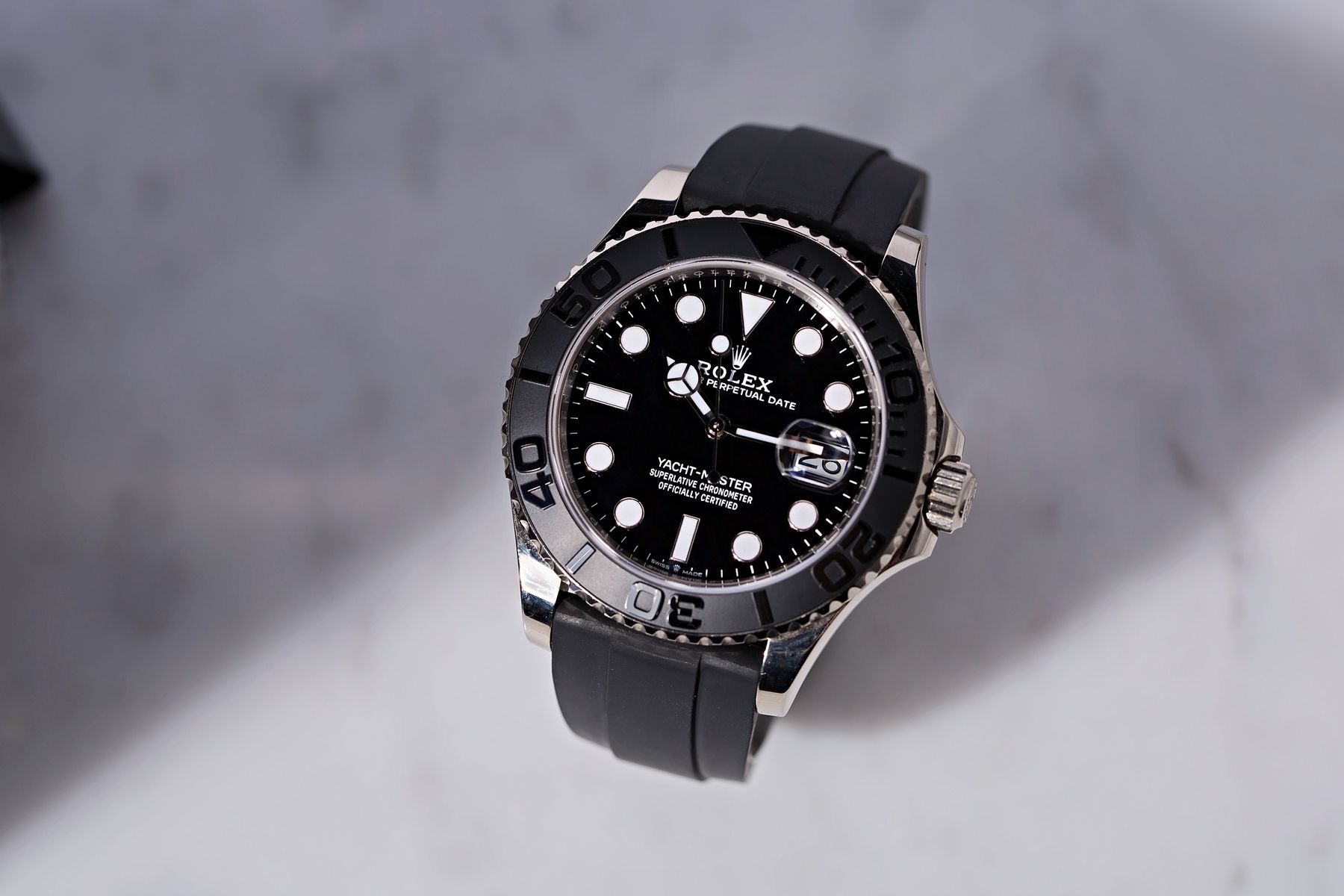
Current Rolex Yacht-Master Collection Key Features:
- Reference Numbers: 226659, 226658, 126655, 126622, 126621, 268621, 268622, 268655
- Year of Introduction: 1992
- Case Sizes: 37mm, 40mm 42mm
- Materials: White Gold, Yellow Gold, Everose Gold, Everose Rolesor (Steel/Everose Gold), Rolesium (Steel/Platinum)
- Functions: Time w/ Running Seconds, Date Display, 60-Minute Timing Bezel
- Dial: Multiple Options Available
- Bezel: Bidirectional rotating; Cerachrom, Platinum, Everose Gold w/ 60-Minute Scale
- Crystal: Sapphire (Flat w/ Cyclops Lens)
- Movement: Rolex Caliber 2236 or Caliber 3235 (Self-Winding)
- Water Resistance: 100 Meters / 330 Feet
- Strap/Bracelet: Oyster Bracelet, Oysterflex Bracelet
Click here for our Ultimate Buying Guide in the Rolex Yacht-Master.
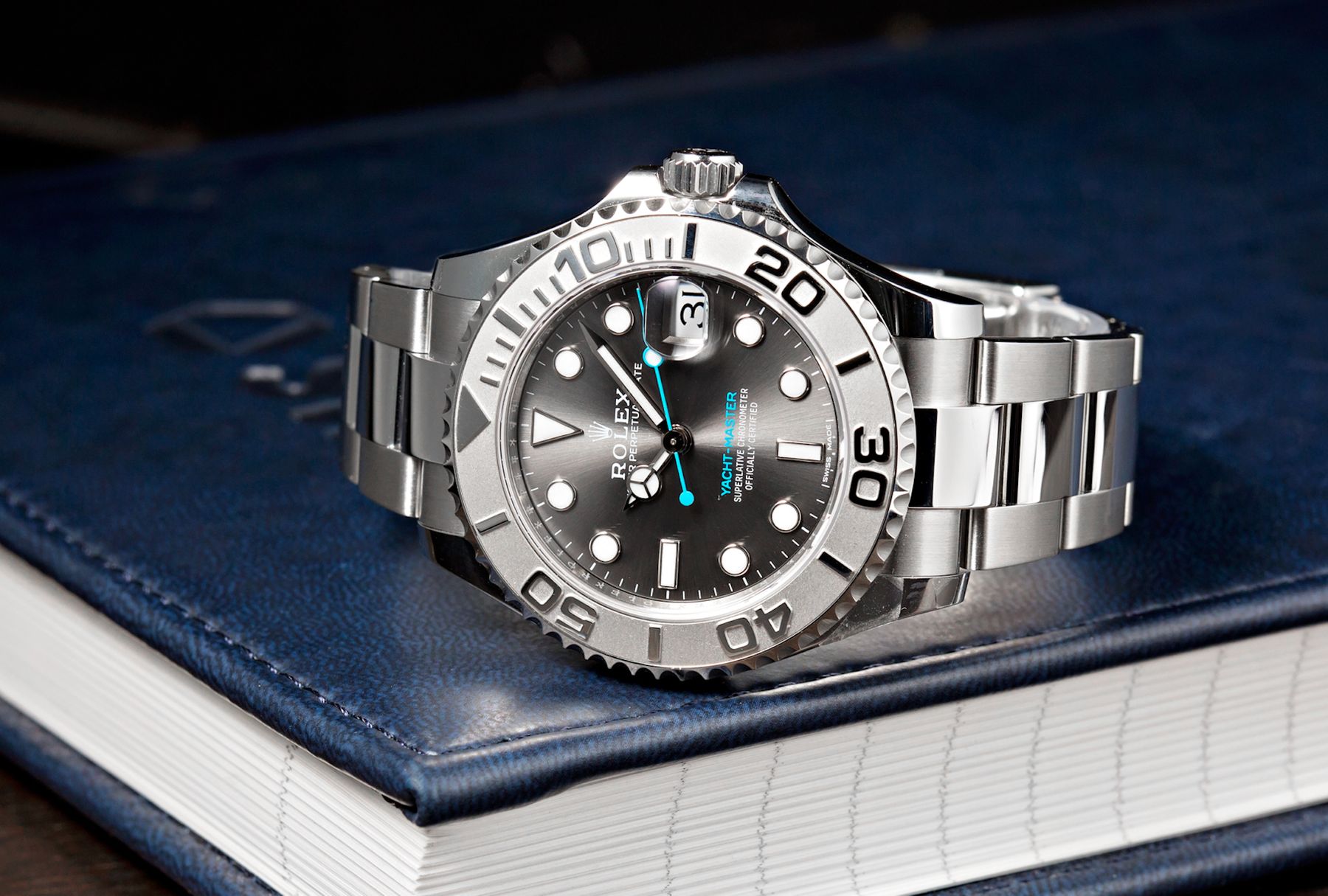
Rolex Yacht-Master as a Tool Watch
As its name would suggest, the Rolex Yacht-Master was developed as a tool-watch for sailing, offering water-resistance up to 100 meters (330 feet) via a Triplock screw-down crown, a highly legible dial, and a bidirectional rotating timing bezel. It’s worth noting that the Yacht-Master was initially only offered in an all-gold finish, with more affordable two-tone options hitting the market in the subsequent years.
Today, the Yacht-Master is the most varied Rolex sports watch collection, available in several sizes, materials, and colorways. Tapered lugs complement the luxurious style of the bezel, which features a matte finish with glossy raised numerals. This gives the Rolex Yacht-Master a refined appearance that stands apart from the more tool-oriented Submariner.
Depending on the reference, the Rolex Yacht-Master bezel is either crafted from sandblasted precious metals or matte black Cerachrom ceramic. The 60-minute timing bezels of the Yacht-Master are distinguished by raised markings, which include numerals and batons. Unlike the unidirectional bezel of the Submariner, the timing bezel on the Yacht-Master is capable of rotating both ways.
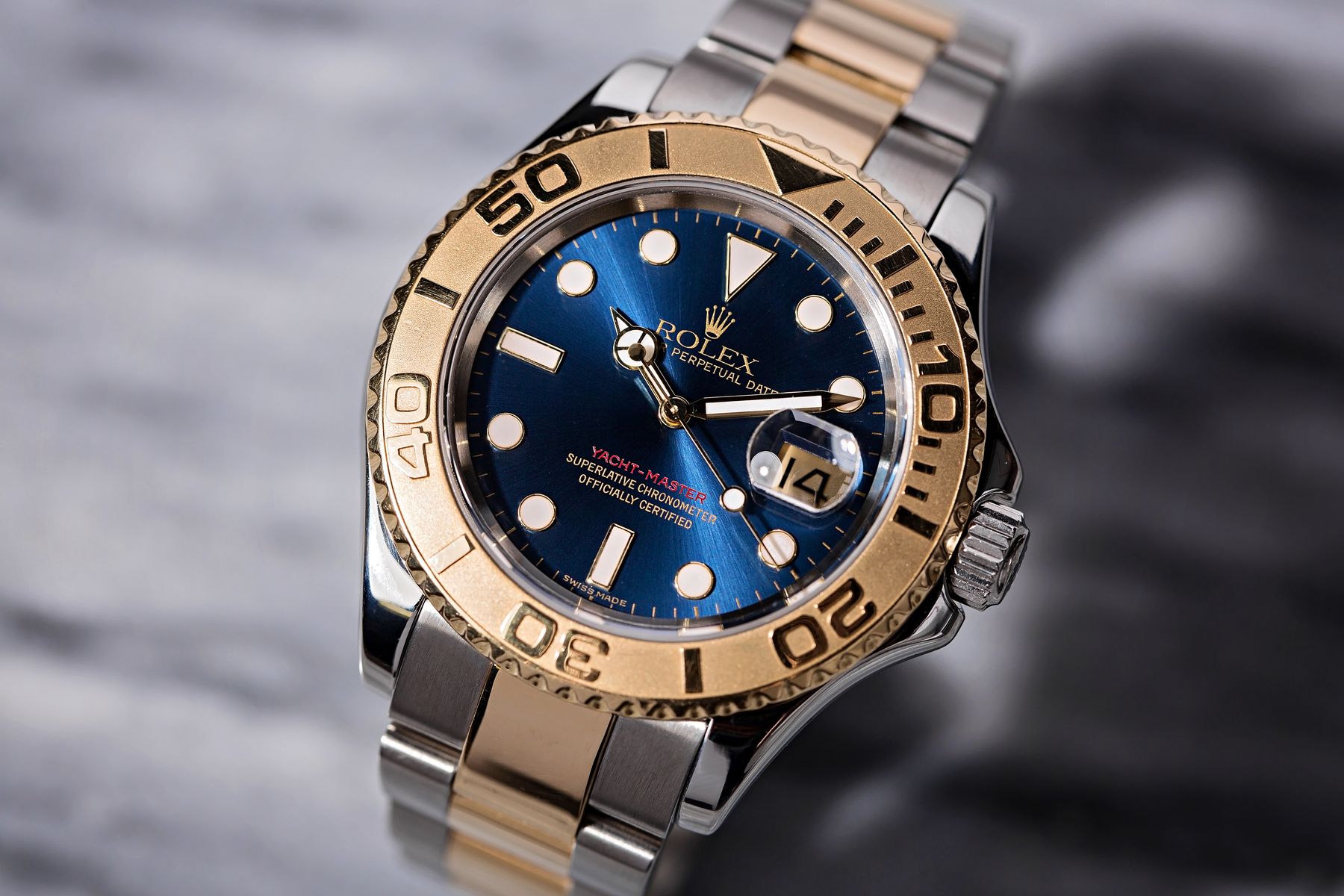
How to Use the Yacht-Master Bezel to Sync with Regatta Start Times
A regatta is a sporting event involving a series of yacht races, and the races have timed starting sequences. Boats have to sail back and forth behind the starting line during the countdown sequence without crossing the line too early (an early start leads to a penalty). Therefore, the Yacht-Master bezel can be used to sync with the official countdown to the race start time. Consequently, it’s especially beneficial that the Rolex Yacht-Master bezel has graduations for the first 10 minutes.
To operate the bezel on the Rolex Yacht-Master, all the user needs to do is simply align the zero position on the bezel (the inverted triangle) with the minute hand, then use the 10-minute hashes to count down to the race start time. For instance, if the countdown is three minutes, then the user has to start when the minute hand reaches the third graduation on the bezel.
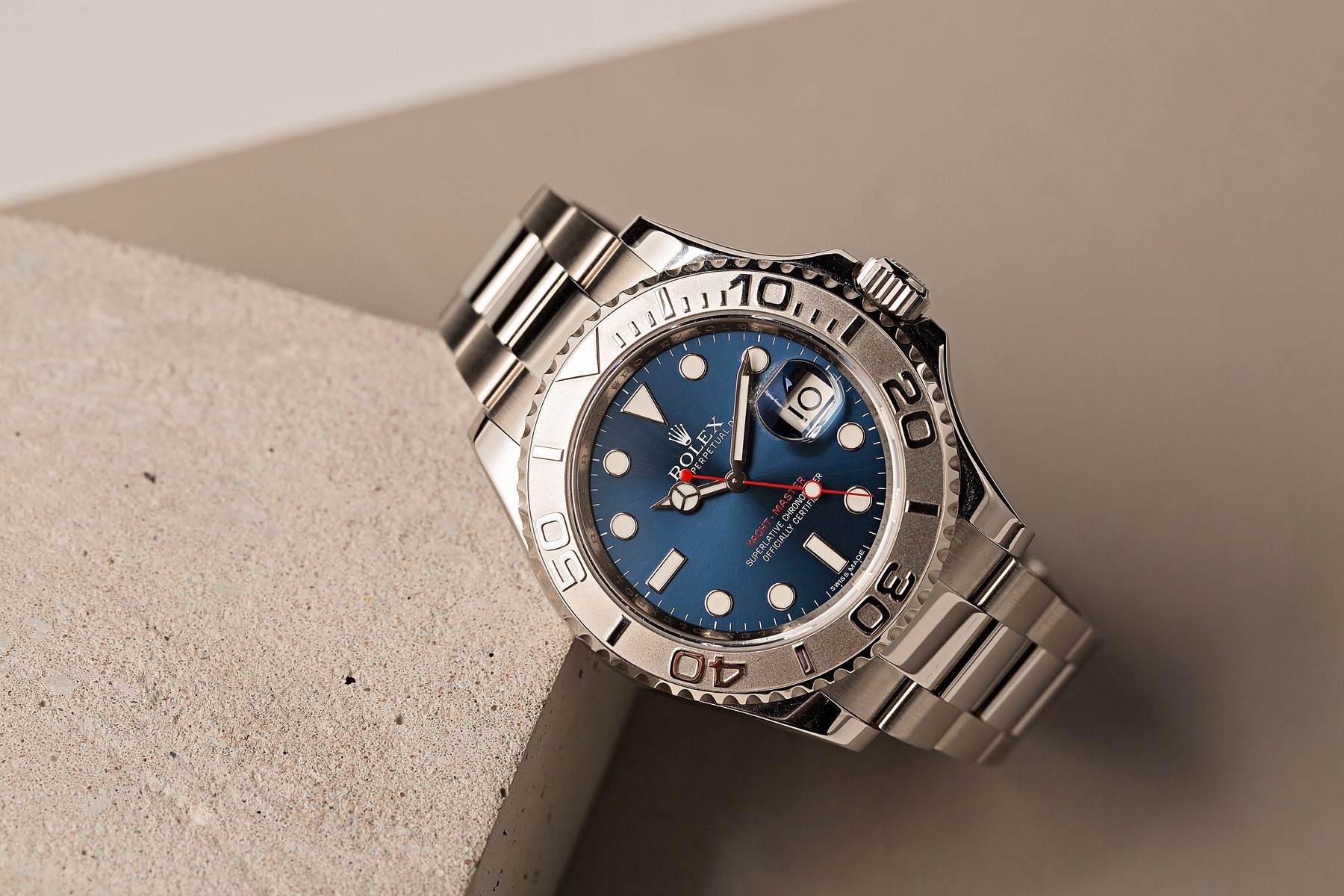
How to Use the Yacht-Master Bezel to Measure Elapsed Time
Measuring elapsed time with the Yacht-Master bezel is pretty straightforward up to 60 minutes. This would come in handy to calculate the sailing time between two buoys. To start, rotate the bezel in either direction to sync the zero market with the minute hand. Once finished, the minute hand will point to the amount of time that has passed against the 60-minute scale on the bezel.
For example, if it is 10:21 at the start of an event, rotate the bezel until the zero position lines up with the minute hand at the 21st minute. Once the event is over, look at where the minute hand points to on the bezel and it will tell you how many minutes have passed. For instance, if the minute hand points to 35 on the bezel, 35 minutes have elapsed since the timer started.
Although these options are useful while sailing, many of us won’t have this need in our everyday lives, as sailing is a niche sport. Thankfully, the Rolex Yacht-Master’s timing capabilities can be used for any event, be it another type of race, or even to time something as quotidian as keeping track of the time left on a parking meter or boiling an egg on the stove!
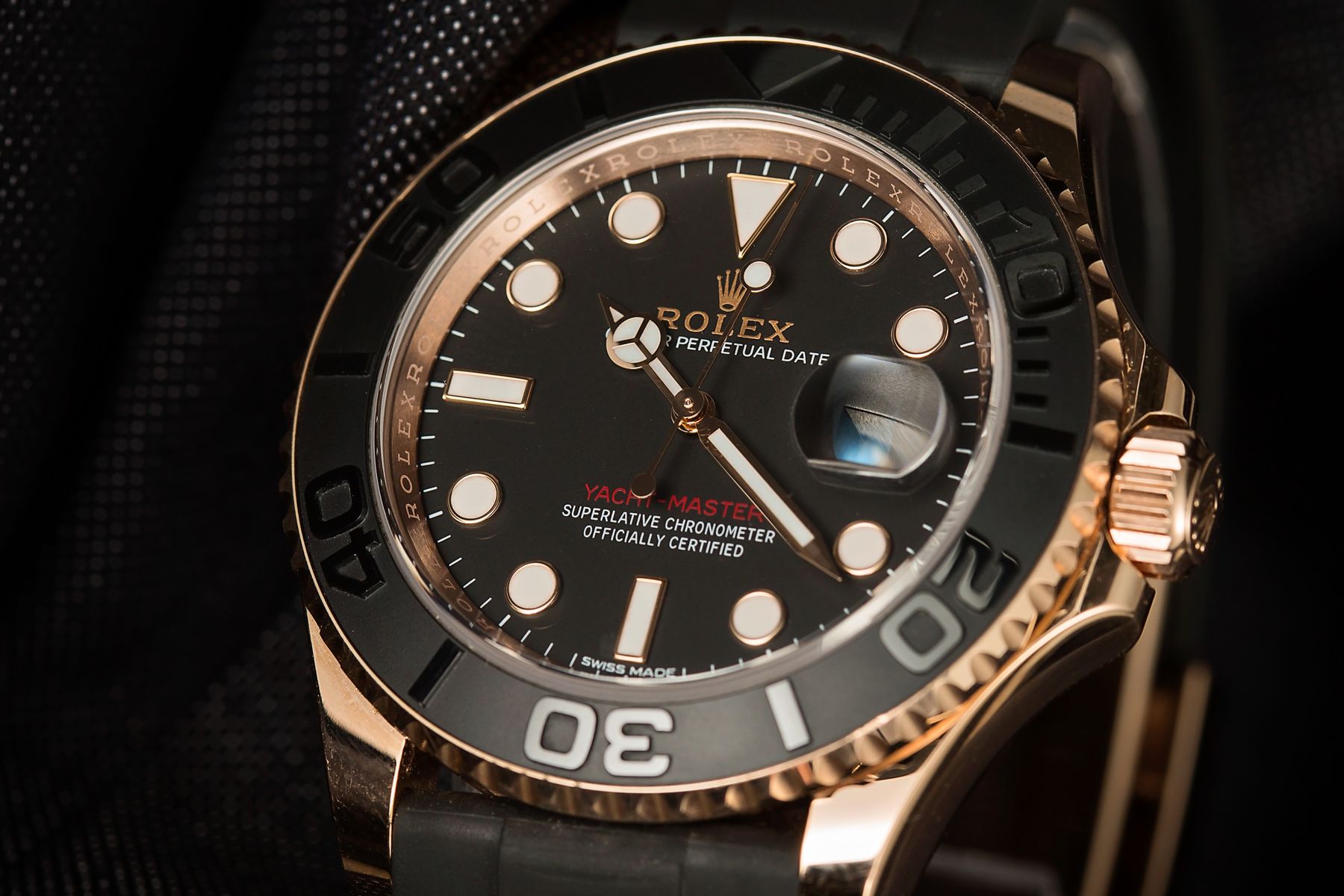
About Paul Altieri
Paul Altieri is a vintage and pre-owned Rolex specialist, entrepreneur, and the founder and CEO of BobsWatches.com. - the largest and most trusted name in luxury watches. He is widely considered a pioneer in the industry for bringing transparency and innovation to a once-considered stagnant industry. His experience spans over 35 years and he has been published in numerous publications including Forbes, The NY Times, WatchPro, and Fortune Magazine. Paul is committed to staying up-to-date with the latest research and developments in the watch industry and e-commerce, and regularly engages with other professionals in the industry. He is a member of the IWJG, the AWCI and a graduate of the GIA. Alongside running the premier retailer of pre-owned Rolex watches, Paul is a prominent Rolex watch collector himself amassing one of the largest private collections of rare timepieces. In an interview with the WSJ lifestyle/fashion editor Christina Binkley, Paul opened his vault to display his extensive collection of vintage Rolex Submariners and Daytonas. Paul Altieri is a trusted and recognized authority in the watch industry with a proven track record of expertise, professionalism, and commitment to excellence.

Bob's Watches Blog Updates
Sign up and be the first to read exclusive articles and the latest horological news.
Bob's Watches / Rolex Blog / Rolex Info
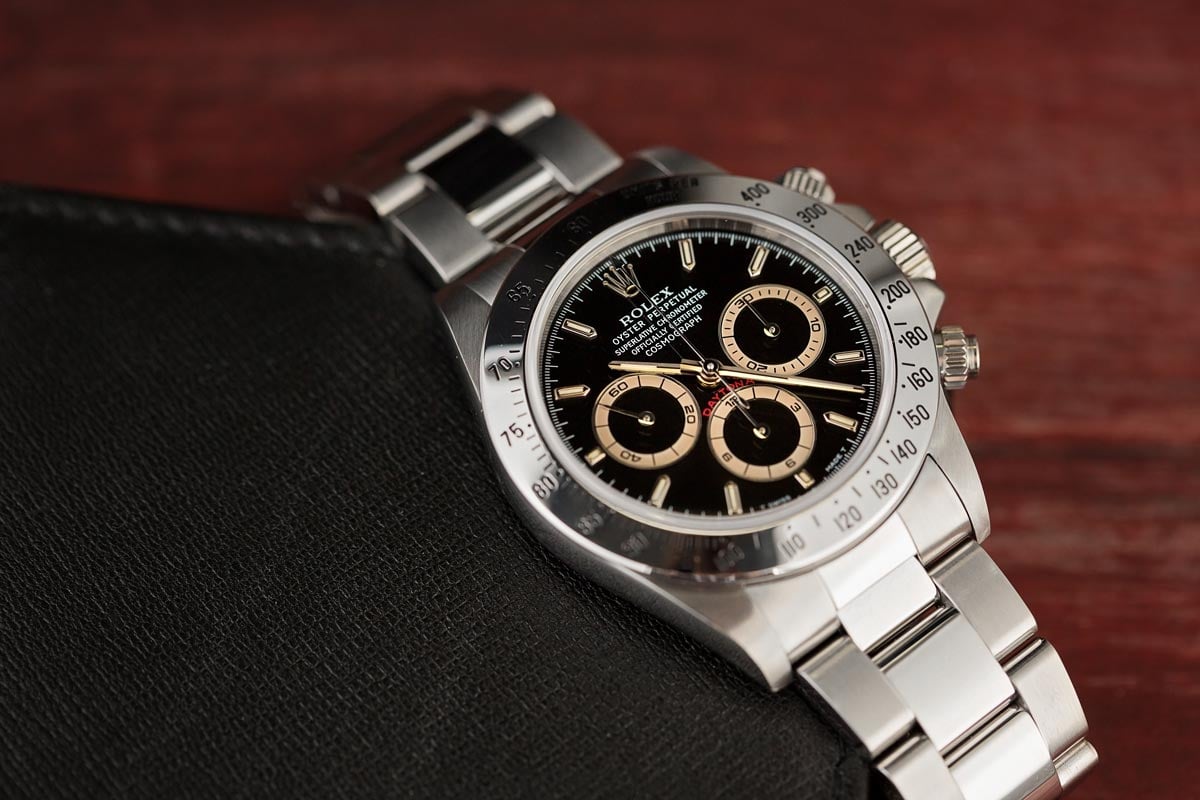
Recommended Articles

Luxury Watch Designers that Changed History
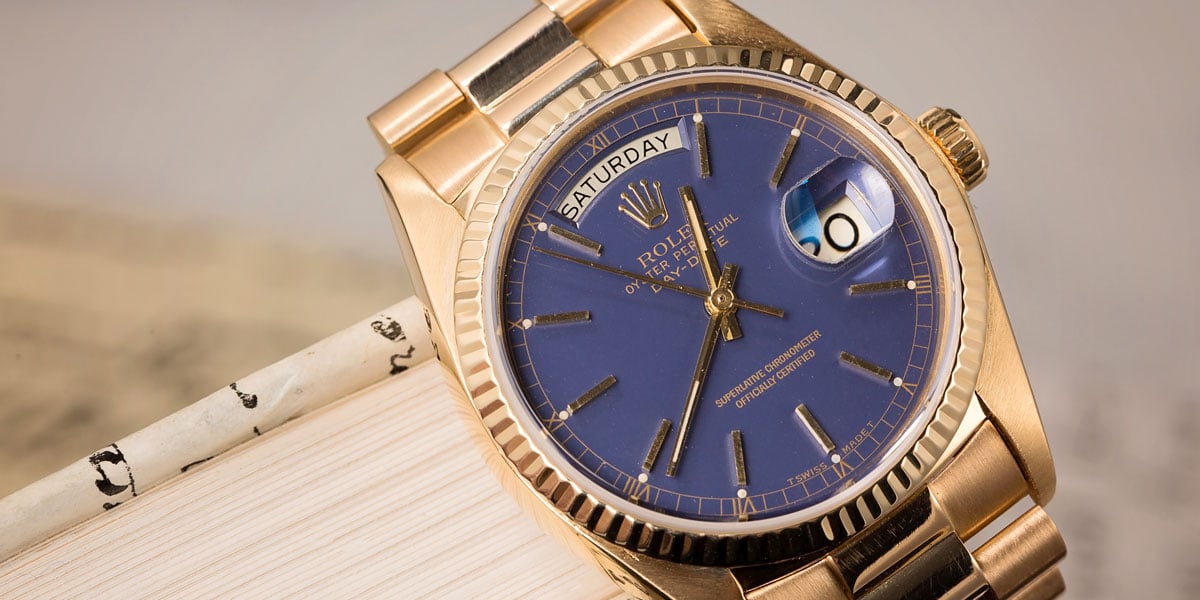
When Did Rolex Start Using Sapphire Crystal?
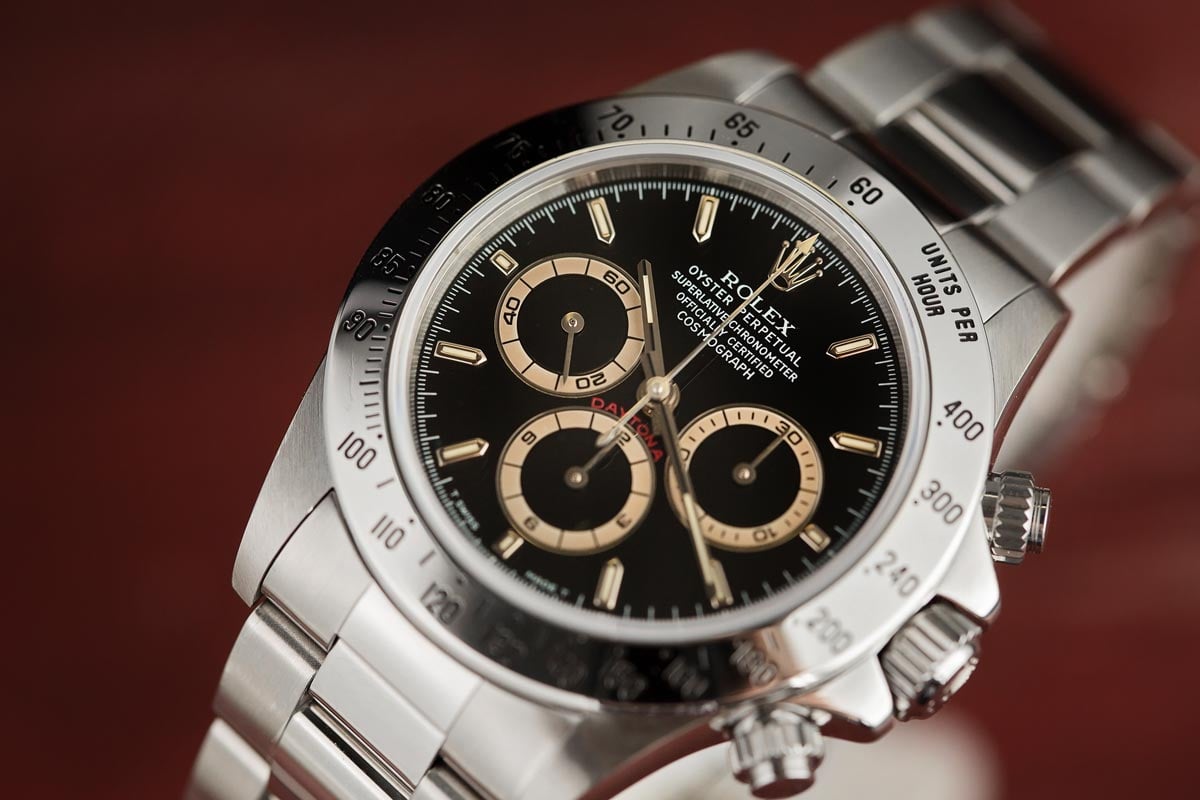
Minute Details: The Rolex Daytona ref. 16520
You may also like.
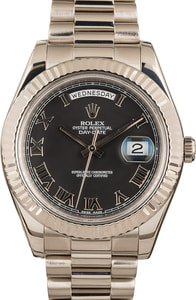
Rolex Day-Date
Rolex President Day-Date II Ref 218239 Black Dial
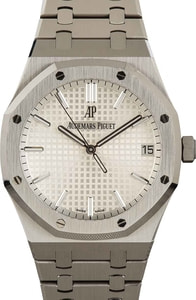
Audemars Piguet Royal Oak
Audemars Piguet Royal Oak Selfwinding Stainless Steel
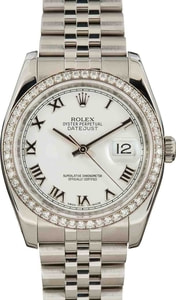
Rolex Datejust
Pre-Owned Rolex Diamond Datejust 116244

Chieftain Training
RYA & STCW Courses – Sail, Power, Super-Yacht & Workboat
What is an Ocean Yachtmaster
What is an ocean yachtmaster and how to become an ocean yachtmaster.
The RYA/MCA Ocean Yachtmaster Certificate of Competence (CoC) is the highest level certificate in the RYA scheme. It can be used by blue water leisure sailors and by commercial skippers and crew. Under the MCA Codes of practice the Ocean Yachtmaster Certificate of Competence holder, (with relevant commercial endorsement etc.) can skipper a vessel;
- Up to 200 tonnes
- Carrying up to 12 passengers
- Anywhere globally (i.e. beyond the 150 miles from a safe haven limit imposed upon a Yachtmaster Offshore).
Furthermore the Yachtmaster Ocean CoC is the minimum requirement for certain officer positions on board larger (over 200 tonne) yachts.
There are 5 stepping stones to becoming an Ocean Yachtmaster CoC holder. Steps 1-4 can be taken in any order although the order presented below is the most logical. Step 5 can only be completed once the first 4 steps have been completed.
- Yachtmaster Offshore Certificate of Competence
RYA Ocean Yachtmaster Shorebased Course
- Qualifying Passage
- Sights and Compass Check by sextant at sea
RYA/MCA Ocean Yachtmaster Certificate of Competence Oral Exam
It is technically possible to take the Ocean Yachtmaster CoC Oral exam without having previously completed the RYA Ocean Shorebased Course but not advised as it involves an additional written exam and you would require all of the relevant knowledge taught on the course. Further information is detailed the relevant 5 steps below;

Becoming a Yachtmaster Offshore Certificate of Competence Holder
While you can proceed towards the RYA Ocean shorebased course and the Ocean practical steps (qualifying passage and sights) you can not proceed to the Oral exam without first holding the Yachtmaster Offshore Certificate of Competence.
This is a 40-hour theory course. It can be taken;
- Over 5 consecutive days face to face in the classroom
- Over 13 evenings face to face night school in the classroom
- Over 5.5 days face to face using zoom
- Online in your own time.
Whichever format you choose the course culminates in a written paper.
The course concentrates on astro navigation, i.e using a sextant and the heavenly bodies (sun, moon, stars and planets) to fix your position. The course also devotes time to ocean voyage planning and worldwide meteorology.
Full details can be found at Ocean Yachtmaster Shorebased Course

While you don’t strictly need to be a Yachtmaster Offshore before taking the Ocean Yachtmaster Shorebased Course , the following knowledge is assumed before the Ocean Shorebased course starts;
- Use of plotting instruments (plotter, dividers etc.)
- Latitude and longitude, knots and nautical miles
- Variation and deviation
- Application of UT, DST
- 2/3 Point fixes and angles of cut
- Dead Reckoning / EP (and ideally the Running Fix)
- GPS and other electronic nav aids
- Coastal/offshore voyage planning
- Sources of forecast information
- Synoptic charts
- Low pressure systems
- Coastal communications /distress comms. (Navtex, VHF, EPIRBs and SARTs)
Is the Ocean Shorebased Written Exam Invigilated?
If you take a face to face Ocean Yachtmaster Shorebased Course then the written paper is invigilated and marked by your Instructor.
If you choose to take the Online or Webinar RYA Ocean Yachtmaster Shorebased Course then face to face invigilation may be required (see table below).
What qualifies as a RYA Yachtmaster Ocean Qualifying Passage?
A qualifying passage must have been taken in the last 10 years. Sea time prior to this date does not qualify. The passage must meet the following requirements
Ocean Candidate’s Role On Board
For your qualifying passage you should be either the skipper or mate in sole charge of a watch. You must have been fully involved in the planning of the passage, including selection of the route, the navigational plan, checking the material condition of the vessel and her equipment, storing with spare gear, water and victuals and organising the watch-keeping routine.
If the skipper changes role at any point during the passage, then neither skipper can use the passage as a qualifying passage.
It is our opinion that it is impossible for multiple Ocean Yachtmaster candidates to use the same passage as their qualifying passage as you can not all fit the definitions above. More than two candidates would be highly unlikely more than three impossible.
Ocean Qualifying Passage
The passage has several minimum requirements
- Departure and arrival ports must be more than 600 miles apart by the shortest navigable route
- Minimum non-stop distance of 600 miles must have been run by the log
- At least 200 miles of that passage must have been more 50 miles from land (or charted objects capable of being used for navigation/position fixing, such as an offshore oil rig)
- The vessel must have been at sea continuously for at least 96 hours
Passages such as recognised races which may not comply exactly with these requirements may be submitted to the RYA for consideration before the voyage.
Examples of Ocean qualifying passages (non stop passages)
- Trans-Atlantic ARC Rally (Canary Islands to St. Lucia/Caribbean)
- Between Azores and anywhere in mainland Europe/UK or the Canary Islands
- Between Bermuda and any of; Bahamas, Caribbean, Canada or most of USA (parts of North Carolina fall below the requirements)
- Between Bermuda and the Azores or Europe
- Solent/UK to Cascais/Portugal,Algarve, Southern Spain or Gibraltar (assuming you follow the rum line or stay offshore when crossing Biscay)
- Trans Pacific Passage (excluding passages between Alaska and Russia, on or close to the Bering Sea)
- Atlantic Germany (Elbe) to Scotland, where the 200 mile run is impossible due to oil rigs)
- Gibraltar to Northern Lanzarote where the mileage falls slightly below 600
- RORC Fastnet Race which does not follow the shortest navigable route or have the 200 mile run
- Northern Spain to Majorca, although well over 600 miles, very little of the passage is over 50 miles from land
If you still are not sure about whether a passage qualifies, then check out the RYA’s definition of a qualifying passage .
Vessel used for Ocean Qualifying Passage
The yacht (or vessel) must be;
- Minimum size 7m, LWL
- Maximum size 500 tonnes (If the vessel is over 24m LOA then the candidate would need to hold an appropriate Certificate of Competence to act as Officer of the Watch on the passage).

Sights and Compass Check by Sextant at Sea
You are required to provide your Ocean Examiner with a minimum of’
- Sun Run Mer Pass (or sun run sun, sun run planet etc.)
- Compass check carried out using the bearing of the sun, moon, a star or planet
Sights are usually taken on the qualifying passage however in some circumstances (such as lots of cloud cover) this is not possible. If sights have been taken on another passage then the following requirement apply to this passage.
- The vessel must of been out of sight of land and charted objects when the sights are taken/used.
- The vessel must be on a passage by the shortest navigable route. You can not therefore simply head offshore take sights and return to departure port.
We always advise candidates to present the examiner with more than the minimum required sights. If you present the examiner with additional sights and your preferred set suffers from errors you still stand a chance of passing the exam.
Prior to the exam you will need to provide the examiner with;
- A narrative account of the planning and execution of the qualifying passage providing all relevant details.
- Navigational records, completed on board a yacht on passage, out of sight of land showing that the candidate has navigated the yacht without the use of electronic navigational aids. The records must include as a minimum, planning, reduction and plotting of a sun run meridian altitude sight and a compass check carried out using the bearing of the sun, moon, a star or planet.
During the oral exam you will be required to answer questions on all aspects of ocean passage making in a yacht, including passage planning, navigation, worldwide meteorology, crew management and yacht preparation, maintenance and repairs.
If you already hold the RYA Ocean Shorebased Course Certificate , the exam typically takes 1.5 hours although examiners can continue questioning considerably longer. If you do not hold the Ocean Shorebased certificate then your exam will take considerably longer as you will also have to take a written test.
Does the Ocean Yachtmaster Qualifying Passage have to be on the same type of vessel as I took my Yachtmaster Offshore Exam on (i.e. power or sail)?
Most candidates will qualify in the same kind of vessel as they passed their Offshore exam, however it is possible to qualify as a Yachtmaster Offshore (power) and then compete the Yachtmaster Ocean requirements on a sail vessel (or vice versa).
I hold a OOW (Yacht 3000gt) CoC but not a Yachtmaster Offshore CoC
If you passed the Yachtmaster Coastal Certificate of Competence Exam instead of the Yachtmaster Offshore Certificate of Competence Exam as your entry requirement into the OOW 3000 CoC then you will not be eligible to hold the Yachtmaster Ocean Certificate of Competence. On passing the oral exam you will receive a pass confirmation certificate.

How do I commercially endorse the Yachtmaster Ocean Certificate of Competence?
Those working under the MCA Codes of practice will require a commercial endorsement. Information can be found at RYA Commercial Endorsements . If you already hold a commercial endorsement on your Yachtmaster Offshore CoC then it is simply transferred across.
Do I require any other certificates to operate commercially as an Ocean Yachtmaster?
To operate a coded sailing yacht in Category 1 or 0 waters (i.e. Over 60 miles from a safe haven) you will additionally require a RYA Diesel Certificate .
To operate the mandatory GMDSS radio equipment on a commercial vessel in Sea Area A2 (more than about 35 miles offshore) you will require either a Long Range Certificate (LRC) or STCW General Operator Certificate (GOC) .
To skipper a coded vessel in Category 1 or 0 waters (i.e. Over 60 miles from a safe haven) you will additionally need to hold STCW Proficiency in Medical First Aid and Proficiency in Medical Care, unless there is a current qualified nurse practitioner (or higher) on board.
If working aboard a vessel in Category 1 or 0 waters (i.e. Over 60 miles from a safe haven) you will need a ENG1 Medical certificate. The alternatives which are suitable further inshore such as ML5 Medical Certificate are not valid in category 1 and 0 waters.
Share this:

IMAGES
VIDEO
COMMENTS
To become a certified Yacht Master, you must successfully pass the Yacht Master examination. This comprehensive exam assesses your theoretical knowledge, practical skills, and ability to safely command a yacht. It is crucial to dedicate ample time to studying and practicing before attempting the examination to ensure success.
The Yacht-Master 37 is the current collection's smallest model, and its moderate case size actually makes it suitable as a unisex watch. This timepiece is powered by the caliber 2236 - which boasts a 55-hour power reserve - and is equipped with Rolex's proprietary silicon Syloxi spring. This type of balance spring is more resistant to ...
The Yacht-Master's bidirectional rotatable 60-minute graduated bezel is made entirely from precious metal (gold or platinum) or fitted with a Cerachrom insert in high-technology ceramic. The raised polished numerals and graduations stand out clearly against a matt background. This functional bezel - which allows the wearer to calculate, for ...
Like other British sailing schools, Sunsail's prep course (a highly recommended prerequisite to the RYA Yachtmaster exam) is a five-day on-the-boat affair. After that, the RYA examiner comes on board and tests two people at a time in succession. Since there were four of us, the exam would take two full days and nights.
Having got through her Yachtmaster Theory, Liz Rushall shares her tips and hints for the Yachtmaster Practical. It's not often I wish to not be aboard a boat, writes Liz Rushall. Liz Rushall has won national dinghy and keelboat titles, but currently cruises a 28ft classic called Ragdoll. But in the dead of night, stressing about to what ...
The Yacht-Master 40 and Yacht-Master 42 are equipped with calibre 3235, a movement entirely developed and manufactured by Rolex. This self-winding mechanical movement incorporates the patented Chronergy escapement, which combines high energy efficiency with great dependability. Made of nickel-phosphorus, it is also resistant to strong magnetic ...
The Yacht-Master and Yacht-Master II models embody the brand's nautical spirit. Inspired by the rich heritage that has bound Rolex to the world of yachting since the 1950s, the Yacht-Master and Yacht-Master II models embody the brand's nautical spirit. The Yacht-Master brilliantly blends function and seafaring style.
The Yacht-Master II joined the Rolex lineup in 2007 and offers never before seen functionality thanks to its regatta timer. Powered by the Calibre 4161 — one of the most complicated Rolex movements ever made (second only to the annual calendar found in the Sky-Dweller — the Yacht-Master II has a patented mechanical memory and on-the-fly ...
A guide to the Rolex Yacht-Master. ET. Editorial Team. Published: 06 Jan 2022. Over the years, the Rolex Yacht-Master watch has grown significantly, becoming one of the most diverse ranges of Rolex watch available. The evolution of the luxury brand's classic sports watch has extended beyond imaginable parallels, offering the avid collector ...
The gold standard. The RYA Yachtmaster® Certificate of Competence is often the ultimate aim of aspiring skippers. It is a well known, highly respected qualification worldwide, proving your experience and competence as a skipper. Unlike other qualifications in the cruising programme, there is no formal training course to become an RYA Yachtmaster.
The first Yacht-Master watch was launched in 1992 under reference number 16628. It featured a yellow gold case, a bidirectional graduated bezel, and a matching full-gold Oyster bracelet. Its dial was white with black hour indices, while at center were gold Mercedes hands, and beating inside was the 3135 movement.
Rolex Yacht-Master II Functions. Looks aside, the big talking point around the Rolex Yacht Master II lies in what it can do. There is a strong argument against calling the watch a genuine chronograph as it doesn't so much keep track of elapsed time in the traditional sense, as it does count backwards from a specific starting point, up to a maximum of 10-minutes.
Watch Chest presents a quick how-to video on how to set the Rolex Yacht-Master, mid-size Yacht-Master, and Lady Yacht-Master. You will learn the Yacht-Master...
The Rolex Yacht-Master II in Yellow Gold and the Omega Constellation in Sedna Gold. 2. The difference with the Yacht-Master from other chronograph watches is that you can jump forward or backward to the closest minute with a one touch to the lower button. There's no need to reset the counter, wasting valuable time in a race.
Yacht Master certification is a valuable and highly sought after qualification for those looking to pursue a career in the yachting industry. It is an internationally recognised qualification that provides evidence of the skills and knowledge required to be a competent yacht skipper.
Modern Sailing Yacht. A Yachtmaster qualification is a certificate of competence of the ability to handle either a sailing boat or motor boat (as endorsed) in certain prescribed conditions. Three different titles are specified; Yachtmaster Coastal (previously - and in some countries still - called Coastal Skipper), Yachtmaster Offshore, and Yachtmaster Ocean which specify the level of ...
The Yacht-Master II's countdown can be programmed for a duration of between 1 and 10 minutes. The programming is memorized by the mechanism so that at a reset it returns to the previous setting. Once launched, the countdown can be synchronized on the fly to match the official race countdown.
The Rolex Yacht-Master II's Mechanical Memory . The key to the adjustable countdown timer on the Rolex Yacht-Master II is the addition of a heart-shaped disc in the minute counter (labeled "9" in the drawing). The disc has an unusual, asymmetrical shape and is referred to as the flyback cam in the patent. This component is also used in ...
YACHT-MASTER MODELS USING YOUR WATCH ROLEX SERVICE SETTING THE WATCH Screwed-down position (position 0) The crown is completely screwed down against the case. When the crown is in this position, the Oyster Perpetual Yacht-Master is guaranteed waterproof to a depth of 100 metres (330 feet). Manual winding (position 1) The crown is unscrewed. To wind
Measuring elapsed time with the Yacht-Master bezel is pretty straightforward up to 60 minutes. This would come in handy to calculate the sailing time between two buoys. To start, rotate the bezel in either direction to sync the zero market with the minute hand. Once finished, the minute hand will point to the amount of time that has passed ...
This video will teach you how to set the Rolex Yacht-Master II. Shop our entire collection of pre-owned Yacht-Master II watches here: https://www.bobswatche...
The RYA/MCA Ocean Yachtmaster Certificate of Competence (CoC) is the highest level certificate in the RYA scheme. It can be used by blue water leisure sailors and by commercial skippers and crew. Under the MCA Codes of practice the Ocean Yachtmaster Certificate of Competence holder, (with relevant commercial endorsement etc.) can skipper a vessel;
The most common path to a yacht's wheelhouse is by rising through the ranks in the yachting industry, starting on deck and building sea time, gaining boat handling and geographical experience, and accruing licenses. But even after the golden ticket is earned — that 500GT or 3,000GT Master license — you'll find there is more to getting ...